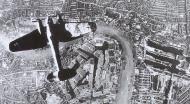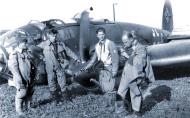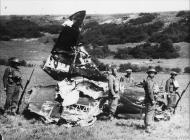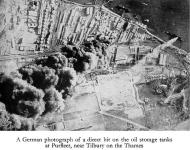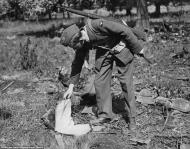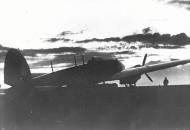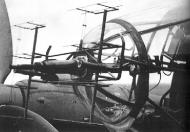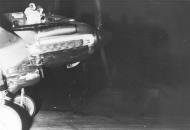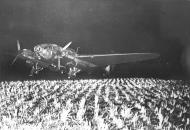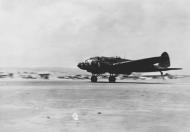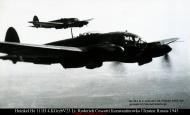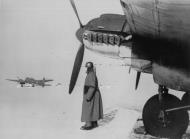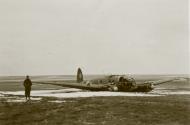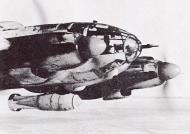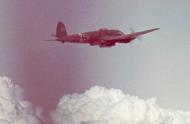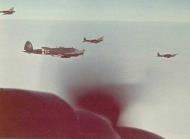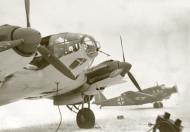Mixed photo's of Heinkel He 111
- Aircraft Photo's
- Aircrew Luftwaffe Erwin Seeger XI Flieger Film Korps photographer 01
- Aircrew Luftwaffe He 111 crew Navigator Pilot and Gunner 01
- Aircrew Luftwaffe Heinkel He 111 front cockpit view 01
- Aircrew Luftwaffe Heinkel He 111 pilots position 01
- Aircrew Luftwaffe Heinkel He 111 waist gunner manning a 7.92mm MG 15 01
- Aircrew Luftwaffe Lt von Schwerin decorated with the Knight cross of the Iron Cross 6th Aug 1940 NIOD
- Artwork line drawing or blue print of a Heinkel He 111B2 scale 1 72 Arkusz 01
- Artwork line drawing or blue print of a Heinkel He 111B2 scale 1 72 Arkusz 02
- Artwork line drawing or blue print of a Heinkel He 111H11 scale 1 72 Arkusz 01
- Artwork line drawing or blue print of a Heinkel He 111H12 scale 1 72 Arkusz 01
- Artwork line drawing or blue print of a Heinkel He 111H16 scale 1 72 Arkusz 01
- Artwork line drawing or blue print of a Heinkel He 111H16 scale 1 72 Arkusz 02
- Artwork line drawing or blue print of a Heinkel He 111H1 scale 1 72 Arkusz 01
- Artwork line drawing or blue print of a Heinkel He 111H1 scale 1 72 Arkusz 02
- Artwork line drawing or blue print of a Heinkel He 111H1 scale 1 72 Arkusz 03
- Artwork line drawing or blue print of a Heinkel He 111H21 scale 1 72 Arkusz 01
- Artwork line drawing or blue print of a Heinkel He 111H2 H4 scale 1 72 Arkusz 01
- Artwork line drawing or blue print of a Heinkel He 111H5 scale 1 72 Arkusz 01
- Artwork line drawing or blue print of a Heinkel He 111H6 scale 1 72 01
- Artwork line drawing or blue print of a Heinkel He 111H6 scale 1 72 02
- Artwork line drawing or blue print of a Heinkel He 111H6 scale 1 72 Arkusz 01
- Artwork line drawing or blue print of a Heinkel He 111H6 scale 1 72 Arkusz 02
- Artwork line drawing or blue print of a Heinkel He 111H8 scale 1 72 Arkusz 01
- Artwork line drawing or blue print of a Heinkel He 111H8 scale 1 72 Arkusz 02
- Artwork line drawing or blue print of a Heinkel He 111H BV 226 flying bomb scale 1 72 Arkusz 01
- Artwork line drawing or blue print of a Heinkel He 111H HS 293 flying bomb scale 1 72 Arkusz 01
- Artwork line drawing or blue print of a Heinkel He 111H scale 1 72 28
- Artwork line drawing or blue print of a Heinkel He 111H scale 1 72 Arkusz 20
- Artwork line drawing or blue print of a Heinkel He 111H scale 1 72 Arkusz 21
- Artwork line drawing or blue print of a Heinkel He 111H scale 1 72 Arkusz 22
- Artwork line drawing or blue print of a Heinkel He 111H scale 1 72 Arkusz 23
- Artwork line drawing or blue print of a Heinkel He 111H scale 1 72 Arkusz 24
- Artwork line drawing or blue print of a Heinkel He 111H scale 1 72 Arkusz 25
- Artwork line drawing or blue print of a Heinkel He 111H showing model changes scale 1 72 Arkusz 01
- Artwork line drawing or blue print of a Heinkel He 111H various bomb carried scale 1 72 Arkusz 01
- A typical Luftwaffe wartime dispersal area as ground crew rearm their He 111s with 250kg bombs
- A US officer posses next to a 2nd staffel belly landed Heinkel He 111H3 with from Jet Prop 01
- Bundesarchiv Bild 183 1982 1022 509 Flugzeugkonstrukteur Prof Ernst Heinkel 01
- Camera battle footage between Luftwaffe He 111H bombers and a RAF Spitfire off the coast 1941 01
- Camera battle footage between Luftwaffe He 111H bombers and a RAF Spitfire off the coast 1941 02
- Camera battle footage between Luftwaffe He 111H bombers and a RAF Spitfire off the coast 1941 03
- Camera battle footage between Luftwaffe He 111H bombers and a RAF Spitfire off the coast 1941 04
- Camera battle footage between Luftwaffe He 111H bombers and a RAF Spitfire off the coast 1941 05
- Gun camera footage from RAF aircraft showing He 111 being hit 25th Sep 1940 01
- Heinkel He6A Stkz NDVQ transporter Germany 01
- Heinkel He6A Stkz NDVQ transporter Germany 02
- Heinkel He 111 adopted for night ops Battle of Britain 24th Oct 1940 NIOD
- Heinkel He 111A ebay 01
- Heinkel He 111 approaching the English island of Jersey 3rd Aug 1940 NIOD
- Heinkel He 111 attacking a merchant ship 5th Jan 1941 NIOD
- Heinkel He 111 at the airport one of the Heinkel factories 01
- Heinkel He 111 being guarded eastern front NIOD
- Heinkel He 111 being moved to a scrap yard Oct 1940 IWM HU72439
- Heinkel He 111 being rearmed 17th Feb 1941 NIOD
- Heinkel He 111 being rearmed 2500kg Bomb 1941 NIOD
- Heinkel He 111 being rearmed 3rd Feb 1941 NIOD
- Heinkel He 111 being rearmed during the Polish campaign 18th Sep 1939 NIOD
- Heinkel He 111 being rearmed ebay 01
- Heinkel He 111 being rearmed Norway 10th Feb 1941 NIOD
- Heinkel He 111 being refueled 4th Jan 1941 NIOD
- Heinkel He 111 being refueled in Italy transit flight 7th Mar 1941 NIOD
- Heinkel He 111 belly landed back in France Battle of Britain 1940
- Heinkel He 111 belly landed nr Copenhagen Denmark 1944 Flickr 01
- Heinkel He 111 bomber crew standing by a SC 1800 Satan bomb 01
- Heinkel He 111 bomber flies over the Soviet Black Sea port of Nikolaev 01
- Heinkel He 111 bomber shot down during a night raid on the Anzio bridgehead 25th Jan 1944 01
- Heinkel He 111C3 D ABYE Konigsberg operated by DLH from 1936 to 1940 01
- Heinkel He 111 cockpit view over France 11th May 1940 NIOD
- Heinkel He 111 coded EJ with Walter Nowotny from JG54 october 1943 01
- Heinkel He 111 counting sheep location and unit unknown 25th Oct 1940 NIOD
- Heinkel He 111 crashed at Bunde Zambia 20th Apr 1940 NIOD
- Heinkel He 111 crashed into the Thames Estuary Jan 1941 01
- Heinkel He 111 crashsite at Eastmans Cairn in Cairnsmore of Fleet Scotland Aug 1940 01
- Heinkel He 111 crash site beinng examined by French troops France 1940 01
- Heinkel He 111 damaged after being ramed by a Soviet Rata 21st Apr 1942 NIOD
- Heinkel He 111 ditched near the shore Battle of Britain 1940 01
- Heinkel He 111 ditching near a ship Mediterranean Sea 1941 42 01
- Heinkel He 111 dropping a SC 1000 Demyansk Area Russia Feb 1942 02
- Heinkel He 111 during Battle of Britain 01
- Heinkel He 111 during Battle of Britain 03
- Heinkel He 111E 21B41D showing pre war marking 01
- Heinkel He 111E 21B41D showing pre war marking 0A
- Heinkel He 111E hangard Germany 1937 ebay 01
- Heinkel He 111 flying low over Denmark 27th Feb 1941 NIOD
- Heinkel He 111 force landed over Holland May 1940 NIOD
- Heinkel He 111 formation heading for England 18th Sep 1940 NIOD
- Heinkel He 111 formation heading for England 2nd Jul 1940 NIOD
- Heinkel He 111 formation heading for England 2nd Sep 1940 NIOD
- Heinkel He 111 front cockpit view from the navigators position over Poland 01
- Heinkel He 111 front cockpit view from the navigators position over Poland 02
- Heinkel He 111 front cockpit view looking out over Norway 01
- Heinkel He 111 fully laden taking off at dusk 1st Mar 1941 NIOD
- Heinkel He 111H 1.Fliegerkorps (B1BA) Roupti Luga Russia 1941 42 01
- Heinkel He 111H11 with 13mm MG131 during engine run up prior to another mission 01
- Heinkel He 111H16 4.KGrzbV23 (BM) Konstantinowka Ukraine Russia 1943 01
- Heinkel He 111H16 nose section showing MG FF MG15 calibre guns 01
- Heinkel He 111H18 FuG 200 Lichtenstein radar 01
- Heinkel He 111H18 FuG 200 Lichtenstein radar 02
- Heinkel He 111H 2.(F)122 France Oct 19 1940 01
- Heinkel He 111H22 Test Centre E2CF carring FZG 76 Reichenberg IV AeroMagazin Nr11 Oct 2003 0A
- Heinkel He 111H2 in formation during Battle of Britain Sep 1940 01
- Heinkel He 111H2 Stkz NGJQ Benina Cyrenaira 1942 01
- Heinkel He 111H 4.KGrzbV23 Lt Roderich Cescotti Konstantinowka Ukraine Russia 1943 01
- Heinkel He 111H4 Fuhrungskette X.Fliegerkorps (P4BA) Catane 1942
- Heinkel He 111H 4 Staffel II Gruppe coded AM undergoing repairs 01
- Heinkel He 111H4 taxing into position Grosse 1940 01
- Heinkel He 111H balloon cable cutter 01
- Heinkel He 111H battle damaged from flack after a night sortie 01
- Heinkel He 111H Benina Cyrenaira 1942 0A
- Heinkel He 111H bombardier points the way to the target Battle of Britain 1940 01
- Heinkel He 111H burnt out wreckage Germany 1945 01
- Heinkel He 111H carrying Go 242 Gliders 01
- Heinkel He 111H carrying Go 242 Gliders 02
- Heinkel He 111H carrying Go 242 Gliders 03
- Heinkel He 111H cut away 0A
- Heinkel He 111H dropping a SC 1000 Demyansk Area Russia Feb 1942 01
- Heinkel He 111H factory fresh 01
- Heinkel He 111H in the preliminary stage of wing installation 01
- Heinkel He 111H mixed war time BW photographs 01
- Heinkel He 111H mixed war time BW photographs 02
- Heinkel He 111H mixed war time BW photographs 03
- Heinkel He 111H mixed war time BW photographs 04
- Heinkel He 111H mixed war time BW photographs 05
- Heinkel He 111H mixed war time BW photographs 06
- Heinkel He 111H mixed war time BW photographs 10
- Heinkel He 111H mixed war time BW photographs 12
- Heinkel He 111H over London Battle of Britain 01
- Heinkel He 111H propaganda photos 1939 01
- Heinkel He 111H propaganda photos 1939 02
- Heinkel He 111H propaganda photos 1939 03
- Heinkel He 111H ready for its next mission summer Eastern front 01
- Heinkel He 111H shot down by RAF 81Sqn near Bone Algeria 15th Nov 1942 IWM 01
- Heinkel He 111H shot down by RAF 81Sqn near Bone Algeria 15th Nov 1942 IWM CNA73
- Heinkel He 111H unknown crew and unit force landed awaiting pick up 01
- Heinkel He 111H World War 2 color photo Eastern front 01
- Heinkel He 111H World War 2 color photo Eastern front 02
- Heinkel He 111H World War 2 color photo Eastern front 03
- Heinkel He 111H World War 2 color photo Eastern front 05
- Heinkel He 111H World War 2 color photo night opps 01
- Heinkel He 111H World War 2 color photo North Africa 01
- Heinkel He 111H World War 2 mixed color photo 01
- Heinkel He 111H World War 2 mixed color photo 02
- Heinkel He 111H World War 2 mixed color photo 03
- Heinkel He 111 landing mishap ebay 01
- Heinkel He 111 lies in shallow water nr Blakeney Norfolk after being shot down June 1940 01
- Heinkel He 111 over Thameshaven 13th Sep 1940 NIOD
- Heinkel He 111 over the drop zone early war markings ebay 01
- Heinkel He 111P4 at the factory Stkz NAIU WNr 2922 Germany 1939 01
- Heinkel He 111P a colorized photo 01
- Heinkel He 111P crash landed Battle of Britain 01
- Heinkel He 111 pilot HA Kopitz sd by flak Netherlands 20th Apr 1940 NIOD
- Heinkel He 111P KG76 close combat formation flying 01
- Heinkel He 111P shot down Soesterberg Netherlands 11th May 1940 NIOD1
- Heinkel He 111P shot down Soesterberg Netherlands 11th May 1940 NIOD2
- Heinkel He 111P showing a crew after landing at night 01
- Heinkel He 111P with their crew after force landing at West Malling Kent Sept 1940 01
- Heinkel He 111 reconnaissance plane sd by RAF fighter during the phoney war 7th Nov 1939 NIOD
- Heinkel He 111 sd by flak during Operation Barbarossa 7th Aug 1941 NIOD
- Heinkel He 111 sd over Denmark May 1940 NIOD
- Heinkel He 111 shot down at Clacton on Sea 1 May 1940 IWM HU70832
- Heinkel He 111 shot down over England is camouflaged Battle of Britain 1940 IWM HU7963
- Heinkel He 111 shot down over England partial code F at Chester 15th Aug 1940 IWM HU106837
- Heinkel He 111 shot down over England partial code F at Chester 15th Aug 1940 IWM HU7958
- Heinkel He 111 taking off 19th May 1941 NIOD
- Heinkel He 111 taxing for a night raid on England 18th Dec 1940 NIOD
- Heinkel He 111 taxing for a raid on England 12th Mar 1941 NIOD
- Heinkel He 111 TGr30 tugs DFS230 Glider 01
- Heinkel He 111 TGr30 tugs DFS230 Glider 02
- Heinkel He 111 transport and supply Stalingrad Russia 1943 01
- Heinkel He 111 under going field maintenance 12th Nov 1941 NIOD
- Heinkel He 111V8 Prototype D AQUO Germany ebay 01
- Heinkel He 111 which blew up and crashed over southern England 1940 IWM HU104735
- Heinkel He 111 which crashed in Suffolk England 8 June 1940 IWM HU104715
- Heinkel He 111 wreckage shot down over Holland 12th May 1940 NIOD
- Heinkel He 177A3 Greif bombers on a unknown airfield summer 1944 01
- Heinkel He 177V5 Stkz PMDD heavy bomber prototype ca 1942 43 01
- Luftwaffe bombing recon photo of Stalingrad 1942 43 Armees No387 2014 P62
- Luftwaffe photo showing a direct hit on the oil storage tanks at Purfleet nr Tilbury on the Thames 01
- RAF airman picks amongst the fragmented remnants of a Heinkel 111 sd at Bishops Court Chelmsford Jun 1940 01
- Russia the remains of a He 111 bomber after being ramed by Alexei Sevastyanov 01
Aircrew Luftwaffe Erwin Seeger XI Flieger Film Korps photographer
XI Flieger Film Korps photographer Erwin Seeger posing in the nose of a Heinkel-111 which was towing a Gotha Go-242 transport glider between Sicily and Tunisia. c.1942/43
Heinkel He 111 which blew up and crashed over southern England 1940 IWM HU104735
Soldiers guard part of the wreckage of a Heinkel He 111 which blew up and crashed over southern England, 1940.
Imperial War Museum IWM HU 104735 https://www.iwm.org.uk/collections/item/object/205227939
Heinkel He 111 1.Fliegerkorps (B1+BA) Roupti Luga Russia 1941-42 01
Heinkel He 111 in formation Sep 1940 01
Photo 01: Providing fighter escort for bomber formations, such as this group of He 111s, proved one of the most difficult tasks for the Jagdgeschwader. Considerable discipline was required, and the fighters found it difficult to remain with the slower bombers without weaving. However, each weave carried the fighters away from the immediate vicinity of the bombers and made the bomber crews more nervous and more insistent in their demands that the fighter escort stay close to them.
Heinkel He 111H3 Geschwaderstab StG3 coded S7+AA and based in Derna, Libya, 1941.Heinkel He 111 seriously damaged France 1940 01
Photo 01: When bombers were lost, or returned to France as seriously damaged as this shot-up He 111, Goring saw this as a failure on the part of the Jadgwaffe to provide adequate protection.
Heinkel He 111H3 Geschwaderstab StG3 coded S7+AA and based in Derna, Libya, 1941.
Heinkel He 111 dropping a SC 1000 Demyansk Area, Russia Feb 1942 01-02
Photo 01-02: The Soviets realized that if they could capture the airfields at Demyansk and Kholm, the pockets would be completely isolated. Luftwaffe bomber units therefore flew missions to support German ground troops holding the outer defense perimeters. Here He 111's drop SC 1000 bombs.
Captured He-111H in RAF 260Sqn markings Libya 1942
Heinkel He 111H bomber, which was abandoned by the Luftwaffe during the retreat after the Battle of El Alamein, on a landing ground in Libya after being "commandeered" by No. 260 Squadron RAF, who painted it with RAF roundels and the unit code letters "HS-?". The Squadron used it to fly supplies, beer and other necessities from Alexandria to their bases in Libya. Date 1942.
Heinkel He 111 being moved to a scrap yard Oct 1940 IWM HU72439
The fuselage of a Heinkel He 111 bomber, being transported by road to a scrap yard, October 1940.
Imperial War Museum IWM HU 72439 https://www.iwm.org.uk/collections/item/object/205069322
Heinkel He 111 shot down at Clacton on Sea 1 May 1940 IWM HU70832
Soldiers guard the scattered wreckage of a Heinkel He 111 at Clacton on Sea, 1 May 1940.
Imperial War Museum IWM HU 70832 https://www.iwm.org.uk/collections/item/object/205060031
Heinkel He 111 which crashed in Suffolk England 8 June 1940 IWM HU104715
A soldier guards the wreckage of a Heinkel He 111 which crashed in Suffolk, demolishing a rectory in the process, 8 June 1940.
Imperial War Museum IWM HU 104715 https://www.iwm.org.uk/collections/item/object/205227941
Heinkel He 111 which blew up and crashed over southern England 1940 IWM HU104735
Soldiers guard part of the wreckage of a Heinkel He 111 which blew up and crashed over southern England, 1940.
Imperial War Museum IWM HU 104735 https://www.iwm.org.uk/collections/item/object/205227939
Heinkel He IIIH shot down by RAF 81Sqn near Bone Algeria 15th Nov 1942 IWM CNA73
Operation TORCH: Flying Officer K L Waud (standing) of No. 81 Squadron RAF, accompanied by two other pilots, points to the damage on the wing of the Heinkel He IIIH which he shot down near Bone, Algeria, on 15 November 1942.
Imperial War Museum IWM CN73 https://www.iwm.org.uk/collections/item/object/205209172
Aircrew Luftwaffe Heinkel He 111 waist gunner manning a 7.92mm MG 15
Photo study of a Heinkel He 111's waist gunner manning a 7.92mm MG 15. After an unexpected high number of losses during the Polish Campaign, in 1940 the He 111's defensive armament was increased from 3 to 5 defensive MGs with the addition of two waist MG 15. Unfortunately for the crew, due to the lack of space, there was only one waist gunner operating both the port and starboard machine guns. This restriction made defending the aircraft against simultaneous attacks from port and starboard an impossible task.Below him is the ventral MG position. Also of interest is the side view of the Luftwaffe's back type parachute.
Original of source unknown
(Color and text by Rui Candeias)Heinkel He 11B Stkz DA+AZ WNr 1120 crashsite Jenec Prague Ruzyne Czech 15th Jul 1941
The crash of a Heinkel He 111B (W.Nr. 1120) DA + AZ in Jenec, Prague-Ruzyne, Czech Republic. July 15, 1941. The crew were conducting a local training flight at nearby Prague-Ruzyne Airport. On the approach, the airplane went out of control and crashed into houses located in the village of Jenec. The aircraft was destroyed and both pilots were killed. The Heinkel crashed through the roof and completely demolished the house. There was only one room left intact, where Mr Rufr, a night shift railwayman was sleeping. He survived the accident, but the crew of the airplane perished. Fortunately, there was no fire during the accident, which would almost certainly have destroyed neighbouring houses. Over the next few days, the Luftwaffe removed the debris from the houses.
Crew: Obgfr. Hans Marahrens, pilot and Obgfr. Otto Herbst, co-pilot.
(Colour by Richard James Molloy)
The Heinkel He 111 in a nutshell
National origin:- Germany Role:- Medium bomber Manufacturer:- Heinkel Flugzeugwerke Designer:- Siegfried and Walter Günter First flight:- 24 February 1935 Introduction:- 1935 Retired: 1945 (Luftwaffe) 1958 (Spain)[1] Primary users:- Luftwaffe Produced:- 1935-44 Number built:- 32 prototype aircraft, 12 civilian airliners, 808 pre-war aircraft, 5,656 aircraft (1939-44) Total: 6,508[2] Variants Produced: CASA 2.111
The Heinkel He 111 was a German aircraft designed by Siegfried and Walter Günter at Heinkel Flugzeugwerke in 1934. Through development it was described as a 'wolf in sheep's clothing'. Due to restrictions placed on Germany after the First World War prohibiting bombers, it masqueraded as a civil airliner, although from conception the design was intended to provide the nascent Luftwaffe with a fast medium bomber.[3]
Perhaps the best-recognised German bomber due to the distinctive, extensively glazed 'greenhouse' nose of later versions, the Heinkel He 111 was the most numerous Luftwaffe bomber during the early stages of World War II. The bomber fared well until the Battle of Britain, when its weak defensive armament was exposed.[3] Nevertheless, it proved capable of sustaining heavy damage and remaining airborne. As the war progressed, the He 111 was used in a variety of roles on every front in the European theatre. It was used as a strategic bomber during the Battle of Britain, a torpedo bomber in the Atlantic and Arctic, and a medium bomber and a transport aircraft on the Western, Eastern, Mediterranean, Middle Eastern, and North African Front theatres.
The He 111 was constantly upgraded and modified, but became obsolete during the latter part of the war. The German Bomber B project was not realised, which forced the Luftwaffe to continue operating the He 111 in combat roles until the end of the war. Manufacture of the He 111 ceased in September 1944, at which point piston-engine bomber production was largely halted in favour of fighter aircraft. With the German bomber force virtually defunct, the He 111 was used for logistics.[3]
Production of the Heinkel continued after the war as the Spanish-built CASA 2.111. Spain received a batch of He 111H-16s in 1943 along with an agreement to licence-build Spanish versions. Its airframe was produced in Spain under licence by Construcciones Aeronáuticas SA. The design differed significantly in powerplant only, eventually being equipped with Rolls-Royce Merlin engines. The Heinkel's descendant continued in service until 1973.
Design and development
Design conception
After its defeat in World War I, Germany was banned from operating an air force by the Treaty of Versailles. German re-armament began earnestly in the 1930s and was initially kept secret because it violated the treaty. The early development of military bombers was disguised as a development program for civilian transport aircraft.[4]
Among the designers seeking to benefit from German re-armament was Ernst Heinkel. Heinkel decided to create the world's fastest passenger aircraft, a goal met with scepticism by Germany's aircraft industry and political leadership. Heinkel entrusted development to Siegfried and Walter Günter, both fairly new to the company and untested.[4]
In June 1933 Albert Kesselring visited Heinkel's offices.[4] Kesselring was head of the Luftwaffe Administration Office: at that point Germany did not have a State Aviation Ministry but only an aviation commissariat, the Luftfahrtkommissariat.[4] Kesselring was hoping to build a new air force out of the Flying Corps being constructed in the Reichswehr, and required modern aircraft.[4] Kesselring convinced Heinkel to move his factory from Warnemünde to Rostock with its factory airfield in the coastal 'Marienehe' region of Rostock (today 'Rostock-Schmarl') and bring in mass production, with a force of 3,000 employees. Heinkel began work on the new design, which garnered urgency as the American Lockheed 12, Boeing 247 and Douglas DC-2 began to appear.[4]
Features of the He 111 were apparent in the Heinkel He 70. The first single-engined He 70 Blitz ('Lightning') rolled off the line in 1932 and immediately started breaking records. In the normal four-passenger version its speed reached 380 km/h (230 mph) when powered by a 447 kW (600 hp) BMW VI engine.[5] The He 70 was designed with an elliptical wing, which the Günther brothers had already incorporated into the Bäumer Sausewind before they joined Heinkel. This wing design became a feature in this and many subsequent designs they developed. The He 70 drew the interest of the Luftwaffe, which was looking for an aircraft with both bomber and transport capabilities.[6]
The He 111 was a twin-engine version of the Blitz, preserving the elliptical inverted gull wing, small rounded control surfaces and BMW engines, so that the new design was often called the Doppel-Blitz ('Double Lightning'). When the Dornier Do 17 displaced the He 70, Heinkel needed a twin-engine design to match its competitors.[5] Heinkel spent 200,000 man hours designing the He 111.[7] The fuselage length was extended to just over 17.4 m/57 ft (from 11.7 m/38 ft 4 in) and wingspan to 22.6 m/74 ft (from 14.6 m/48 ft).[5]
First flight
The first He 111 flew on 24 February 1935, piloted by chief test pilot Gerhard Nitschke, who was ordered not to land at the company's factory airfield at Rostock-Marienehe (today's Rostock-Schmarl neighbourhood), as this was considered too short, but at the central Erprobungstelle Rechlin test facility. He ignored these orders and landed back at Marienehe. He said that the He 111 performed slow manoeuvres well and that there was no danger of overshooting the runway.[8][9] Nitschke also praised its high speed 'for the period' and 'very good-natured flight and landing characteristics', stable during cruising, gradual descent and single-engined flight and having no nose-drop when the undercarriage was operated.[10] During the second test flight Nitschke revealed there was insufficient longitudinal stability during climb and flight at full power and the aileron controls required an unsatisfactory amount of force.[10]
By the end of 1935, prototypes V2 V4 had been produced under civilian registrations D-ALIX, D-ALES and D-AHAO. D-ALES became the first prototype of the He 111 A-1 on 10 January 1936 and received recognition as the 'fastest passenger aircraft in the world', as its speed exceeded 402 km/h (250 mph).[11] The design would have achieved a greater total speed had the 1,000 hp DB 600 inverted-V12 engine that powered the Messerschmitt Bf 109s tenth through thirteenth prototypes been available.[6] Heinkel was forced initially to use the 650 hp BMW VI 'upright' V12 liquid-cooled engine.[9]
During the war, British test pilot Eric Brown evaluated many Luftwaffe aircraft. Among them was an He 111 H-1 of Kampfgeschwader 26 which was forced to land at the Firth of Forth on 9 February 1940. Brown described his impression of the He 111s unique greenhouse nose: - The overall impression of space within the cockpit area and the great degree of visual sighting afforded by the Plexiglas panelling were regarded as positive factors, with one important provision in relation to weather conditions. Should either bright sunshine or rainstorms be encountered, the pilot's visibility could be dangerously compromised either by glare throwback or lack of good sighting.[12]
Taxiing was easy and was only complicated by rain, when the pilot needed to slide back the window panel and look out to establish direction. On take off, Brown reported very little 'swing' and the aircraft was well balanced. On landing, Brown noted that approach speed should be above 145 km/h (90 mph) and should be held until touchdown. This was to avoid a tendency by the He 111 to drop a wing, especially on the port side.[12]Competition
In the mid-1930s, Dornier Flugzeugwerke and Junkers competed with Heinkel for Ministry of Aviation (German: Reichsluftfahrtministerium, abbreviated RLM) contracts. The main competitor to the Heinkel was the Junkers Ju 86. In 1935, comparison trials were undertaken with the He 111. At this point, the Heinkel was equipped with two BMW VI engines while Ju 86A was equipped with two Jumo 205Cs, both of which had 492 kW (660 hp). The He 111 had a slightly heavier takeoff weight of 8,220 kg (18,120 lb) compared to the Ju 86's 8,000 kg (17,640 lb) and the maximum speed of both aircraft was 311 km/h (193 mph).[10] The Ju 86 had a higher cruising speed of 177 mph (285 km/h), 9 mph (14 km/h) faster than the He 111. This stalemate was altered drastically by the appearance of the DB 600C, which increased the He 111's power by 164 kW (220 hp).[10] The Ministry of Aviation awarded both contracts, and Junkers sped up development and production at a breathtaking pace, but the financial expenditure for the Junkers was huge. In 1934-1935, 3,800,000 RM (4 % of annual turnover) was spent. The Ju 86 appeared at many flight displays all over the world which helped sales to the Ministry of Aviation and abroad. Dornier, which was also competing with their Do 17, and Heinkel were not as successful. In production terms, the He 111 was more prominent with 8,000 examples produced[10] against just 846 Ju 86s,[7] and was therefore the Luftwaffe's most numerous type at the beginning of the Second World War.[10]
Basic design
The design of the He 111 A-L initially had a conventional stepped cockpit, with a pair of windscreen-like panels for the pilot and co-pilot. The He 111P and subsequent production variants were fitted with fully glazed cockpits and a laterally asymmetric nose, with the port side having the greater curvature for the pilot, offsetting the bombardier to starboard. The resulting stepless cockpit, which was a feature on a number of German bomber designs during the war years in varying shapes and formats, no longer had the separate windscreen panels for the pilot. Pilots had to look outside through the same bullet-like glazing that was used by the bombardier and navigator. The pilot was seated on the left and the navigator/bomb aimer on the right. The navigator went forward to the prone bomb-aiming position or could tilt his chair to one side, to move into the rear of the aircraft. There was no cockpit floor below the pilot's feet the rudder pedals being on arms giving very good visibility below.[13] Sliding and removable panels were manufactured into the nose glazing to allow the pilot, navigator and or bomb aimer to exit the aircraft quickly, without a time-consuming retreat into the fuselage.[14]
Inside Wk Nr 701152 He 111 H-20. Looking forward to the first bulkhead from the ventral gunner's position. The control column and cockpit glazing is visible in the central background. The fuselage contained two major bulkheads, with the cockpit at the front of the first bulkhead. The nose was fitted with a rotating machine gun mount, offset to allow the pilot a better field of forward vision. The cockpit was fully glazed, with the exception of the lower right section, which acted as a platform for the bombardier-gunner. The commonly-used Lotfernrohr-series bombsight penetrated through the cockpit floor into a protective housing on the external side of the cockpit.[13]
Between the forward and rear bulkhead was the bomb bay, which was constructed with a double-frame to strengthen it for carrying the bomb load. The space between the bomb bay and rear bulkhead was used up by Funkgerät radio equipment and contained the dorsal and flexible casemate ventral gunner positions. The rear bulkhead contained a hatch which allowed access into the rest of the fuselage which was held together by a series of stringers. The wing was a two spar design. The fuselage was formed of stringers to which the fuselage skin was riveted. Internally the frames were fixed only to the stringers, which made for simpler construction at the cost of some rigidity.[13]
The wing leading edges were swept back to a point inline with the engine nacelles, while the trailing edges were angled forward slightly. The wing contained two 700 L (190 US gal) fuel tanks between the inner wing main spars, while at the head of the main spar the oil coolers were fitted. Between the outer spars, a second pair of reserve fuel tanks were located, carrying an individual capacity of 910 L (240 US gal) of fuel.[13] The outer trailing edges were formed by the ailerons and flaps, which were met by smooth wing tips which curved forward into the leading edge. The outer leading edge sections were installed in the shape of a curved 'strip nosed' rib, which was positioned ahead of the main spar. Most of the interior ribs were not solid, with the exception of the ribs located between the rear main spar and the flaps and ailerons. These were of solid construction, though even they had lightening holes.[13]
Heinkel He 111 H-1
The control systems also had some innovations. The control column was centrally placed and the pilot sat on the port side of the cockpit. The column had an extension arm fitted and had the ability to be swung over to the starboard side in case the pilot was incapacitated. The control instruments were located above the pilot's head in the ceiling, which allowed viewing and did not block the pilot's vision.[15] The fuel instruments were electrical. The He 111 used the inner fuel tanks, closest to the wing root, first. The outer tanks acted as reserve tanks. The pilot was alerted to the fuel level when there was 100 L (26 US gal) left. A manual pump was available in case of electrical or power failure but the delivery rate of just 4 L (1.2 US gal) per minute demanded that the pilot fly at the lowest possible speed and just below 3,048 m (10,000 ft). The He 111 handled well at low speeds.[15]
The defensive machine gun positions were located in the glass nose and in the flexible ventral, dorsal and lateral positions in the fuselage, and all offered a significant field of fire.[16] The machine gun in the nose could be moved 10 upwards from the horizontal and 15 downwards.[16] It could traverse some 30 laterally. Both the dorsal and ventral machine guns could move up and downwards by 65. The dorsal position could move the 13 mm (.51 in) MG 131 machine gun 40 laterally, but the ventral Bola-mount 7.92 mm (.312 in) twinned MG 81Z machine guns could be moved 45 laterally. Each MG 81 single machine gun mounted in the side of the fuselage in 'waist' positions, could move laterally by 40 and could move upwards from the horizontal by 30 and downwards by 40.[16]
Early civilian variants
He 111C
The first prototype, He 111 V1 (W.Nr. 713, D-ADAP), flew from Rostock-Marienehe on 24 February 1935.[17] It was followed by the civilian-equipped V2 and V4 in May 1935. The V2 (W.Nr. 715, D-ALIX) used the bomb bay as a four-seat 'smoking compartment', with another six seats behind it in the rear fuselage. V2 entered service with Deutsche Luft Hansa in 1936, along with six other newly built versions known as the He 111C.[18] The He 111 V4 was unveiled to the foreign press on 10 January 1936.[18] Nazi propaganda inflated the performance of the He 111C, announcing its maximum speed as 400 km/h (249 mph); in reality its performance stood at 360 km/h (224 mph).[19] The He 111 C-0 was a commercial version and took the form of the V4 prototype design. The first machine was designated D-AHAO 'Dresden'. It was powered by the BMW VI engine and could manage a range (depending on the fuel capacity) of 1,000 km (621 mi) to 2,200 km (1,367 mi)[19] and a maximum speed of 310 km/h (193 mph).[20] The wing span on the C series was 22.6 m (74 ft 1in).[20] The fuselage dimensions were 17.1 m (56 ft 1in) in the He 111 V1, but changed in the C to 17.5 m (57 ft 5 in). The Jumo 205 diesel powerplant replaced the BMW VI. Nevertheless, the maximum speed remained in the 220-240 km/h (137-149 mph) bracket. This was increased slightly when the BMW 132 engines were introduced.[20]
A general problem existed in powerplants. The He 111 was equipped with BMW VI glycol-cooled engines. The German aviation industry lacked powerplants that could produce more than 600 hp.[9] Engines of suitable quality were kept for military use, frustrating German airline Luft Hansa and forcing it to rely on the BMW VI or 132s.[20]
He 111G
The He 111G was an upgraded variant and had a number of differences to its predecessors. To simplify production the leading edge of the wing was straightened, like the bomber version. Engine types used included the BMW 132, BMW VI, DB 600 and DB601A. Some C variants were upgraded with the new wing modifications. A new BMW 132H engine was also used in a so-called Einheitstriebwerk (unitary powerplant). These radial engines were used in the Junkers Ju 90 and the Focke-Wulf Fw 200 Condor. The wing units and engines were packed together as complete operating systems, allowing for a quick change of engine[21] - a likely direct precursor of the wartime Kraftei aviation engine unitization concept. The He 111G was the most powerful as well as the fastest commercial version.[21] The G-0 was given the BMW VI 6.0 ZU. Later variants had their powerplants vary. The G-3 for example was equipped with the BMW 132. The G-4 was powered by DB600G inverted-vee 950 hp (710 kW) engines and the G-5 was given the DB601B with a top speed of 410 km/h (255 mph). By early 1937, eight G variants were in Lufthansa service. The maximum number of He 111s in Lufthansa service was 12. The He 111 operated all over Europe and flew as far away as South Africa. Commercial development ended with the He 111G.[21]
Military variants
He 111 A - D
The initial reports from the test pilot, Gerhard Nitschke, were favourable. The He 111's flight performance and handling were impressive although it dropped its wing in the stall. As a result, the passenger variants had their wings reduced from 25 m (82 ft) to 23 m (75 ft). The military aircraft - V1, V3 and V5 - spanned just 22.6 m (74.1 ft).[17]
The first prototypes were underpowered, as they were equipped with 431 kW (578 hp) BMW VI 6.0 V12 in-line engines. This was eventually increased to 745 kW (999 hp) with the fitting of the DB (Daimler-Benz) 600 engines in the V5, which became the prototype of the 'B' series.[17]
Only ten He 111 A-0 models based on the V3 were built, but they proved to be underpowered and were eventually sold to China. The type had been lengthened by 1.2 m (3.9 ft) due to the added 7.92 mm (.312 in) MG 15 machine gun in the nose. Another gun position was installed on top of the fuselage, and another in a ventral position as a 'dustbin' exposed turret, which could retract. The bomb bay was divided into two compartments and could carry 680 kg (1,500 lb) of bombs. The problem with these additions was that the weight of the aircraft reached 8,200 kg (18,080 lb). The He 111's performance was seriously reduced; in particular, the BMW VI 6.0 Z engines were not now powerful enough. The increased length also altered the 111's aerodynamic strengths and reduced its excellent handling on takeoffs and landings.[22]
The crews found the aircraft difficult to fly, and its top speed was reduced significantly. Production was shut down after the pilots reports reached the Ministry of Aviation. However, a Chinese delegation was visiting Germany and they considered the He 111 A-0 fit for their needs and purchased seven machines.[23]
The first He 111B made its maiden flight in the autumn of 1936. The first production batch rolled off the production lines that summer, at Rostock.[24] Seven B-0 pre-production aircraft were built, bearing the Werknummern (Works numbers) 1431 to 1437. The B-0s were powered by DB 600C engines fitted with variable pitch airscrews.[24] The screws increased output by 149 kW (200 hp). The B-0 had a MG 15 machine gun installed in the nose. The B-0 could also carry 1,500 kg (3,310 lb) in their vertical cells.[24] The B-1 had some minor improvements, including the installation of a revolving gun-mount in the nose and a flexible Ikaria turret under the fuselage.[24] After improvements, the RLM ordered 300 He 111 B-1s; the first were delivered in January 1937. In the B-2 variant, engines were upgraded to the supercharged 634 kW (850 hp) DB 600C, or in some cases, the 690 kW (925 hp) 600G. The B-2 began to roll off the production lines at Oranienburg in 1937.[25] The He 111 B-3 was a modified trainer. Some 255 B-1s were ordered.[24] However, the production orders were impossible to fulfill and only 28 B-1s were built.[24] Owing to the production of the new He 111E, only a handful of He 111 B-3s were produced. Due to insufficient capacity, Dornier, Arado and Junkers built the He 111B series at their plants in Wismar, Brandenburg and Dessau, respectively.[24] The B series compared favourably with the capacity of the A series. The bomb load increased to 1,500 kg (3,300 lb), while there was also an increase in maximum speed and altitude to 215 mph (344 km/h) and 22,000 ft (6,700 m).[11][23]
In late 1937, the D-1 series entered production. However, the DB 600Ga engine with 781 kW (1,047 hp) planned for this variant was instead allocated to Messerschmitt Bf 109 and Bf 110 production lines. Heinkel then opted to use Junkers Jumo engines, and the He 111 V6 was tested with Jumo 210 G engines, but was judged underpowered. However, the improved 745 kW (999 hp) Jumo 211 A-1 powerplant prompted the cancellation of the D series altogether and concentration on the design of the E series.[26]
He 111 E
The pre-production E-0 series were built in small numbers, with Jumo 211 A-1 engines loaded with retractable radiators and exhaust systems. The variant could carry 1,700 kg (3,748 lb) of bombs, giving it a takeoff weight of 10,300 kg (22,707 lbs). The development team for the Jumo 211 A-1 engines managed to increase engine power to 930 hp (690 kW), subsequently the He 111 E-1s bomb load capacity increased to 2,000 kg (4,410 lb) and a top speed of 242 mph (390 km/h).[27]
The E-1 variant with Jumo 211A-1 engines was developed in 1937, the He 111 V6 being the first production variant. The E-1 had its original powerplant, the DB 600 replaced with the Jumo 210 Ga engines.[28] The more powerful Jumo 211 A-1 engines desired by the Ministry of Aviation were not ready; another trial aircraft, He 111 V10 (D-ALEQ) was to be fitted with two oil coolers necessary for the Jumo 211 A-1 installation.[28]
The E-1s came off the production line in February 1938, in time for a number of these aircraft to serve in the Condor Legion during the Spanish Civil War in March 1938.[29] The RLM thought that because the E variant could outrun enemy fighters in Spain, there was no need to increase the defensive weaponry, which would prove to be a mistake in later years.[28]
The fuselage bomb bay used four bomb racks but in later versions eight modular standard bomb racks were fitted, to carry one SC 250 kg (550 lb) bomb or four SC 50 kg (110 lb) bombs pointing nose up. These modular standard bomb racks were a common feature on the first generation of Luftwaffe bombers but they limited the ordnance selection to bombs of only two sizes and were abandoned in later designs.[28]
The E-2 series was not produced and was dropped in favour of producing the E-3 with only a few modifications, such as external bomb racks.[27] Its design features were distinguished by improved FuG radio systems.[29] The E-3 series was equipped with the Jumo 211 A-3s of 1,100 hp (820 kW).[29]
The E-4 variant was fitted with external bomb racks also and the empty bomb bay space was filled with an 835 L (221 US gal) tank for aviation fuel and a further 115 L (30 US gal) oil tank. This increased the loaded weight but increased range to 1,800 km (1,130 mi). The modifications allowed the He 111 to perform both long- and short-range missions.[30] The E-4's eight internal vertically aligned bomb racks could each carry a 250 kg (550 lb) bomb.[31] The last E Variant, the He 111 E-5, was powered by the Jumo 211 A-3 and retained the 835 L (221 US gal) fuel tank on the port side of the bomb bay. Only a few E-4 and E-5s were built.[29]
The RLM had acquired an interest in rocket boosters fitted, for the sake of simplicity, below the wings of a heavily loaded bomber, to cut down the length of runway needed for takeoff. Once in the air the booster canisters would be jettisoned by parachute for reuse. The firm of Hellmuth Walter, at Kiel, handled this development.[32] The first standing trials and tests flights of the Walter HWK 109-500 Starthilfe liquid-fueled boosters were held in 1937 at Neuhardenberg with test pilot Erich Warsitz at the controls of Heinkel He 111E bearing civil registration D-AMUE.[33]
He 111 F
The He 111 design quickly ran through a series of minor design revisions. One of the more obvious changes started with the He 111F models, which moved from the elliptical wing to one with straight leading and trailing edges, which could be manufactured more efficiently.[29] The dimensions of the new design had a wing span of 22.6m (74 ft 1in) and an area of 87.60m2 (942.90 ft).[29]
Heinkel's industrial capacity was limited and production was delayed. Nevertheless, 24 machines of the F-1 series were exported to Turkey.[29] Another 20 of the F-2 variant were built.[34] The Turkish interest, prompted by the fact the tests of the next prototype, He 111 V8, was some way off, prompted the Ministry of Aviation to order 40 F-4s with Jumo 211 A-3 engines. These machines were built and entered service in early 1938.[26] This fleet was used as a transport group during the Demyansk Pocket and Battle of Stalingrad.[35] At this time, development began on the He 111J. It was powered by the DB 600 and was intended as a torpedo bomber. As a result, it lacked an internal bomb bay and carried two external torpedo racks. The Ministry of Aviation gave an order for the bomb bay to be retrofitted; this variant became known as the J-1. In all but the powerplant, it was identical to the F-4.[26]
The final variant of the F series was the F-5, with bombsight and powerplants identical to the E-5.[34] The F-5 was rejected as a production variant owing to the superior performance of the He 111 P-1.[34]
He 111 J
The He 111's low-level performance attracted the interest of the Kriegsmarine. The result was the He 111J, capable of carrying torpedoes and mines. However, the navy eventually dropped the program as they deemed the four-man crew too extravagant. The RLM continued production of the He 111 J-0. Some 90 (other sources claim 60) were built in 1938 and were then sent to Küstenfliegergruppe 806 (Coastal Flying Group).[36][37] Powered by the DB 600G engines, it could carry a 2,000 kg (4,410 lb) payload. Only a few of the pre-production J-0s were fitted with the powerplant, the DB 600 was used, performance deteriorated and the torpedo bomber was not pursued. The J variants were used in training schools until 1944.[34] Some J-1s were used as test beds for Blohm & Voss L 10 [de] radio-guided air-to-ground torpedo missiles.[38]
He 111 P
The He 111P incorporated the updated Daimler-Benz DB 601A-1 liquid-cooled engine and featured a newly designed nose section, including an asymmetric mounting for an MG 15 machine gun that replaced the 'stepped' cockpit with a roomier and more aerodynamic glazed stepless cockpit over the entire front of the aircraft. This smooth glazed nose was first tested on the He 111 V8 in January 1938. These improvements allowed the aircraft to reach 475 km/h (295 mph) at 5,000 m (16,400 ft) and a cruise speed of 370 km/h (230 mph), although a full bomb load reduced this figure to 300 km/h (190 mph).[26] The design was implemented in 1937 because pilot reports indicated problems with visibility.[26] The pilot's seat could actually be elevated, with the pilot's eyes above the level of the upper glazing, complete with a small pivoted windscreen panel, to get the pilot's head above the level of the top of the 'glass tunnel' for a better forward view for takeoffs and landings. The rear-facing dorsal gun position, enclosed with a sliding, near-clear view canopy, and for the first time, the ventral Bodenlafette rear-facing gun position, immediately aft of the bomb bay, that replaced the draggy 'dustbin' retractable emplacement became standard, having been first flown on the He 111 V23, bearing civil registration D-ACBH.[39]
One of Heinkel's rivals, Junkers, built 40 He 111Ps at Dessau. In October 1938, the Junkers Central Administration commented: Apparent are the externally poor, less carefully designed components at various locations, especially at the junction between the empennage and the rear fuselage. All parts have an impression of being very weak.... The visible flexing in the wing must also be very high. The left and right powerplants are interchangeable. Each motor has an exhaust-gas heater on one side, but it is not connected to the fuselage since it is probable that ... the warm air in the fuselage is not free of carbon monoxide (CO). The fuselage is not subdivided into individual segments, but is attached over its entire length, after completion, to the wing centre section. Outboard of the powerplants, the wings are attached by universal joints. The latter can in no way be satisfactory and have been the cause of several failures.[40]
The new design was powered by the DB 601 Ba engine with 1,175 PS[26] The first production aircraft reached Luftwaffe units in Fall 1938. In May 1939, the P-1 and P-2 went into service with improved radio equipment. The P-1 variant was produced with two DB 601Aa powerplants of 1,150 hp (860 kW). It had self-sealing fuel tanks.[41] The P-1 featured a semi-retractable tail wheel to decrease drag.[41] Armament consisted of a MG 15 in the nose, and a sliding hood for the fuselage's dorsal B-Stand position. Installation of upgraded FuG III radio communication devices were also made and a new ESAC-250/III vertical bomb magazine was added. The overall takeoff weight was now 13,300 kg (29,321 lb).[42]
The P-2, like the later P-4, was given stronger armour and two MG 15 machine guns in 'waist' mounts on either side of the fuselage and two external bomb racks.[26] Radio communications consisted of FuG IIIaU radios and the DB601 A-1 replaced the 601Aa powerplants. The Lotfernrohr 7 bombsights, which became the standard bombsight for German bombers, were also fitted to the P-2. The P-2 was also given 'field equipment sets' to upgrade the weak defensive armament to four or five MG 15 machine guns.[42] The P-2 had its bomb capacity raised to 4 ESA-250/IX vertical magazines.[42] The P-2 thus had an empty weight of 6,202 kg (13,272 lb), a loaded weight increased to 12,570 kg (27,712 lb) and a maximum range of 2,100 km (1,305 mi).[42]
The P-3 was powered with the same DB601A-1 engines. The aircraft was also designed to take off with a land catapult (KL-12). A towing hook was added to the fuselage under the cockpit for the cable. Just eight examples were produced, all without bomb equipment.[41]
The P-4 contained many changes from the P-2 and P-3. The jettisonable loads were capable of considerable variation. Two external SC 1800 kg (3,960 lb) bombs, two LMA air-dropped anti-shipping mines, one SC 1,800 kg plus four SC 250 kg; or one SC 2,500 kg external bomb could be carried on an ETC Rastsatz rack. Depending on the load variation, an 835 L fuel and 120 L oil tank could be added in place of the internal bomb bay. The armament consisted of three defensive MG 15 machine guns.[41] later supplemented by a further three MG 15s and one MG 17 machine gun. The radio communications were standard FuG X(10), Peil G V direction finding and FuBI radio devices. Due to the increase in defensive firepower, the crew numbers increased from four to five. The empty weight of the P-4 increased to 6,775 kg (14,936 lb), and the full takeoff weight increased to 13,500 kg (29,762 lb) owing to the mentioned alterations.[41]
The P-5 was powered by the DB601A. The variant was mostly used as a trainer and at least twenty-four production variants were produced before production ceased.[34] The P-5 was fitted with meteorological equipment, and was used in Luftwaffe weather units.[41]
Many of the He 111 Ps served during the Polish Campaign. With the Junkers Ju 88 experiencing technical difficulties, the He 111 and the Do 17 formed the backbone of the Kampfwaffe. On 1 September 1939, Luftwaffe records indicate the Heinkel strength at 705 (along with 533 Dorniers).[43]
The P-6 variant was the last production model of the He 111 P series. In 1940, the Ministry of Aviation abandoned further production of the P series in favour of the H versions, mostly because the P-series' Daimler-Benz engines were needed for Messerschmitt Bf 109 and Bf 110 fighter production. The remaining P-6s were redesignated P-6/R2s and used as heavy glider tugs.[44] The most notable difference with previous variants was the upgraded DB 601N powerplants.[40]
The P-7 variant's history is unclear. The P-8 was said to have been similar to the H-5 fitted with dual controls.[40] The P-9 was produced as an export variant for the Hungarian Air Force. Due to the lack of DB 601E engines, the series was terminated in summer 1940.[40]
He 111H and its variants
He 111 H-1 to H-10
The H variant of the He 111 series was more widely produced and saw more action during World War II than any other Heinkel variant. Owing to the uncertainty surrounding the delivery and availability of the DB 601 engines, Heinkel switched to 820 kW (1,100 hp) Junkers Jumo 211 powerplants, whose somewhat greater size and weight were regarded as unimportant considerations in a twin-engine design. When the Jumo was fitted to the P model it became the He 111 H. The He 111 H-1 was fitted with a standard set of three 7.92 mm (.312 in) MG 15 machine guns and eight SC 250 250 kg (550 lb) or 32 SC 50 50 kg (110 lb) bombs. The same armament was used in the H-2 which started production in August 1939.[45] The P-series was gradually replaced on the eve of war with the new the H-2, powered by improved Jumo 211 A-3 engines of 820 kW (1,100 hp).[45] A count on 2 September 1939 revealed that the Luftwaffe had a total of 787 He 111s in service, with 705 combat ready, including 400 H-1 and H-2s that had been produced in a mere four months.[46] Production of the H-3, powered by the 895 kW (1,200 hp) Jumo 211 D-1, began in October 1939. Experiences during the Polish Campaign led to an increase in defensive armament. MG 15s were fitted whenever possible and the number of machine guns was sometimes increased to seven. The two waist positions received an additional MG 15, and on some variants a belt-fed MG 17 was even installed in the tail.[45] A MG FF cannon could sometimes be installed in the nose or forward gondola.[47]
After the Battle of Britain, smaller scale production of the H-4s began. The H-4 was virtually identical to the He 111 P-4 with the DB 600s swapped for the Jumo 211D-1s. Some also used the Jumo 211H-1.[48][49] This variant also differed from the H-3 in that it could either carry 2,000 kg (4,410 lb) of bombs internally or mount one or two external racks to carry one 1,800 kg (3,970 lb) or two 1,000 kg (2,210 lb) bombs. As these external racks blocked the internal bomb bay doors, a combination of internal and external storage was not possible. A PVR 1006L bomb rack was fitted externally and an 835 L (221 US gal) tank added to the interior spaces left vacant by the removal of the internal bomb-bay. The PVR 1006L was capable of carrying a SC 1000 1,000 kg (2,210 lb) bomb. Some H-4s had their PVC racks modified to drop torpedoes.[48] Later modifications enabled the PVC 1006 to carry a 2,500 kg (5,510 lb) 'Max' bomb. However 1,000 kg (2,200 lb) 'Hermann' or 1,800 kg (3,970 lb) 'Satans' were used more widely.[50]
The H-5 series followed in February 1941, with heavier defensive armament.[51] Like the H-4, it retained a PVC 1006 L bomb rack to enable it to carry heavy bombs under the fuselage. The first ten He 111 H-5s were pathfinders, and selected for special missions. The aircraft sometimes carried 25 kg flashlight bombs which acted as flares. The H-5 could also carry heavy fire bombs, either heavy containers or smaller incendiary devices attached to parachutes. The H-5 also carried LM A and LM B aerial mines for anti-shipping operations. After the 80th production aircraft, the PVC 1006 L bomb rack was removed and replaced with a heavy-duty ETC 2000 rack, enabling the H-5 to carry the SC 2500 'Max' bomb, on the external ETC 2000 rack, which enabled it to support the 5,000 lb (2,300 kg) bomb.[52]
Some H-3 and H-4s were equipped with barrage balloon cable-cutting equipment in the shape of cutter installations forward of the engines and cockpit. They were designated H-8, but later named H8/R2. These aircraft were difficult to fly and production stopped. The H-6 initiated some overall improvements in design. The Jumo 211 F-1 engine of 1,007 kW (1,350 hp) increased its speed while the defensive armament was upgraded at the factory with one 20 mm MG FF cannon in the nose and/or gondola positions (optional), two MG 15 in the ventral gondola, and one each of the fuselage side windows. Some H-6 variants carried tail-mounted MG 17 defensive armament.[53] The performance of the H-6 was much improved. The climb rate was higher and the machine could reach a slightly higher ceiling of 8,500 m (27,200 ft). When heavy bomb loads were added, this ceiling was reduced to 6,500 m (20,800 ft). The weight of the H-6 increased to 14,000 kg (30,600 lb). Some H-6s received Jumo 211F-2s which improved a low-level speed of 226 mph (365 km/h). At an altitude of 6,000 m (19,200 ft) the maximum speed was 270 mph (435 km/h). If heavy external loads were added, the speed was reduced by 21.75 mph (35 km/h).[54]
Other designs of the mid-H series included the He 111 H-7 and H-8. The airframes were to be rebuilds of the H-3/H-5 variant. Both were designed as night bombers and were to have two Jumo 211F-1s installed. The intention was for the H-8 to be fitted with cable-cutting equipment and barrage ballon deflectors on the leading edge of the wings. The H-7 was never built.[55]
The H-9 was intended as a trainer with dual control columns. The airframe was a H-1 variant rebuild. The powerplants consisted of two JumoA-1s or D-1s.[55] The H-10 was also designated to trainer duties. Rebuilt from an H-2 or H-3 airframe, it was installed with full defensive armament including 13 mm (.51 in) MG 131 and 7.92 mm (.312 in) MG 81Z machine guns. It was to be powered by two Jumo 211A-1s, D-1s or F-2s.[55]
Later H variants, H-11 to H-20
In the summer of 1942, the H-11, based on the H-3 was introduced. With the H-11, the Luftwaffe had at its disposal a powerful medium bomber with heavier armour and revised defensive armament. The drum-fed 7.92 mm (.312 in) MG 15 was replaced with a belt-fed 13 mm (.51 in) MG 131 in the now fully enclosed dorsal position (B-Stand); the gunner in the latter was now protected with armoured glass. The single MG 15 in the ventral C-Stand or Bola was also replaced, with a belt-fed 7.92 mm (.312 in) MG 81Z with much higher rate of fire. The beam positions originally retained the single MG 15s, but the H-11/R1 replaced these with twin MG 81Z as well; this latter arrangement was standardized in November 1942. The port internal ESAC bomb racks could be removed, and an 835 L (221 US gal) fuel tanks installed in its place.[56] Many H-11s were equipped with a new PVC rack under the fuselage, which carried five 250 kg (550 lb) bombs. Additional armour plating was fitted around crew spaces, some of it on the lower fuselage and could be jettisoned in an emergency. Engines were two 1,000 kW (1,340 hp) Junkers Jumo 211F-2, allowing this variant to carry a 2,000 kg (4,410 lb) payload to a range of 2,340 km (1,450 mi). Heinkel built 230 new aircraft of this type and converted 100 H-3s to H-11s by the summer of 1943.[56]
The third mass production model of the He 111H was the H-16, entering production in late 1942. Armament was as on the H-11, with some differences. The 20 mm MG FF cannon was deleted, as the H-16s were seldom employed on low-level missions, and was replaced with a single MG 131 in a flexible installation in the nose (A-Stand). On some aircraft, designated He 111 H-16/R1, the dorsal position was replaced by a Drehlafette DL 131 electrically powered turret, armed with a single MG 131. The two beam and the aft ventral positions were provided with MG 81Zs, as on the H-11. The two 1,000 kW (1,340 hp) Jumo 211 F-2 provided a maximum speed of 434 km/h (270 mph) at 6,000 m (19,690 ft); cruising speed was 390 km/h (242 mph), service ceiling was 8,500 m (27,900 ft).[57]Funkgerät (FuG) radio equipment. FuG 10P, FuG 16, FuBl Z and APZ 6 were fitted for communication and navigation at night, while some aircraft received the FuG 101a radio altimeter. The H-16 retained its eight ESAC internal bomb cells; four bomb cells, as on previous versions could be replaced by a fuel tank to increase range. ETC 2000 racks could be installed over the bomb cell openings for external weapons carriage. Empty weight was 6,900 kg (15,210 lb) and the aircraft weighed 14,000 kg (30,860 lb) fully loaded for take off. German factories built 1,155 H-16s between the end of 1942 and the end of 1943; in addition, 280 H-6s and 35 H-11s were updated to H-16 standard.[57] An undetermined number of H variants were fitted with the FuG 200 Hohentwiel. The radar was adapted as an anti-shipping detector for day or night operations.[58][59]
The last major production variant was the H-20, which entered into production in early 1944. It was planned to use two 1,305 kW (1,750 hp) Junkers Jumo 213E-1 engines, turning three-blade, Junkers VS 11 wooden-bladed variable-pitch propellers. It would appear this plan was never developed fully. Though the later H-22 was given the E-1, the F-2 remained the H-20's main power plant. Heinkel and its licensees built 550 H-20s through the summer of 1944, while 586 H-6s were upgraded to H-20 standard.[60][61]
In contrast to the H-11 and H-16, the H-20, equipped with two Jumo 211F-2s, had more powerful armament and radio communications. The defensive armament consisted of one MG 131 in an A-Stand gun pod for the forward mounted machine gun position. One rotatable Drehlafette DL 131/1C (or E) gun mount in the B-stand was standard and later MG 131 machine guns were added.[62] Navigational direction-finding gear was also installed. The Peil G6 was added to locate targets and the FuBI 2H blind landing equipment was built in to help with night operations. The radio was a standard FuG 10, TZG 10 and FuG 16Z for navigating to the target. The H-20 also was equipped with barrage balloon cable-cutters. The bomb load of the H-20 could be mounted on external ETC 1000 racks, or four ESAC 250 racks. The sub variant H-20/R4 could carry 20 50 kg (110 lb) bombs as external loads.[62]
He 111Z
The He 111Z Zwilling (English: Twin) was a design that entailed the mating of two He 111s. The design was originally conceived to tow the Messerschmitt Me 321 glider. Initially, four He 111 H-6s were modified. This resulted in an aircraft with twin fuselages and five engines. They were tested at Rechlin in 1941, and the pilots rated them highly.[63]
A batch of 10 were produced and five were built from existing H-6s. The machines were joined by a center wing formed by two sections 6.15 m (20 ft) in length. The powerplants were five Junkers Jumo 211F engines producing 1,000 kW (1,340 hp) each. The total fuel capacity was 8,570 L (2,260 US gal). This was increased by adding of four 600 L (160 US gal) drop tanks.[36] The He111Z could tow a Gotha Go 242 glider or Me 321 for up to 10 hours at cruising speed. It could also remain airborne if the three central powerplants failed. The He 111 Z-2 and Z-3 were also planned as heavy bombers carrying 1,800 kg (3,970 lb) of bombs and having a range of 4,000 km (2,500 mi). The ETC installations allowed for a further four 600 L (160 US gal) drop tanks to be installed.
The He 111 Z-2 could carry four Henschel Hs 293 anti-ship missiles, which were guided by the FuG 203b Kehl III missile control system.[64] With this load, the He 111Z had a range of 1,094 km (680 mi) and a speed of 314 km/h (195 mph). The maximum bombload was 7,200 kg (15,870 lb). To increase power, the five Jumo 211F-2 engines were slated to be fitted with Hirth TK 11 superchargers. Onboard armament was the same as the He 111H-6, with the addition of one 20 mm MG 151/20 in a rotating gun-mount on the center section.
The layout of the He 111Z had the pilot and his controls in the port fuselage only. The controls themselves and essential equipment were all that remained in the starboard section. The aircraft had a crew of seven; a pilot, first mechanic, radio operator and gunner in the port fuselage, and the observer, second mechanic and gunner in the starboard fuselage.[36]
The Z-3 was to be a reconnaissance version and would have had additional fuel tanks, increasing its range to 6,000 km (3,730 mi). Production was due to take place in 1944, just as bomber production was being abandoned. The long-range variants failed to come to fruition.[65] The He 111Z was to have been used in an invasion of Malta in 1942 and as part of an airborne assault on the Soviet cities of Astrakhan and Baku in the Caucasus in the same year. During the Battle of Stalingrad their use was cancelled due to insufficient airfield capacity. Later in 1943, He111Zs helped evacuate German equipment and personnel from the Caucasus region, and during the Allied invasion of Sicily, attempted to deliver reinforcements to the island.[66]
During operations, the He 111Z did not have enough power to lift a fully loaded Me 321. Some He 111s were supplemented by rocket pods for extra takeoff thrust, but this was not a fleet-wide action. Two rockets were mounted beneath each fuselage and one underneath each wing. This added 500 kg (1,100 lb) in weight. The pods were then released by parachute after takeoff.[36]
The He 111Z's operational history was minimal. One machine was caught by RAF fighter aircraft over France on 14 March 1944. The He 111Z was towing a Gotha Go 242, and was shot down.[67] Eight were shot down or destroyed on the ground in 1944.[68]
Production
He 111 production in 1939
To meet demand for numbers, Heinkel constructed a factory at Oranienburg. On 4 May 1936, construction began, and exactly one year later the first He 111 rolled off the production line.[69] The Ministry of Aviation Luftwaffe administration office suggested that Ernst Heinkel lend his name to the factory. The 'Ernst Heinkel GmbH' was established with a share capital of 5,000,000 Reichsmarks (RM). Heinkel was given a 150,000 RM share.[69] The factory itself was built by, and belonged to, the German state.[69] From this production plant, 452 He 111s and 69 Junkers Ju 88s were built in the first year of the war.[70] German production for the Luftwaffe amounted to 808 He 111s by September 1939.[71] According to Heinkel's memoirs, a further 452 were built in 1939, giving a total of 1,260.[71] But '1940s production suffered extreme losses during the Battle of Britain, with 756 bombers lost'.[70] Meanwhile, the He 111's rival - the Ju 88 - had increased production to 1,816 aircraft, some 26 times the number from the previous year.[70] Losses were also considerable the previous year over the Balkans and Eastern Fronts. To compensate, He 111 production was increased to 950 in 1941.[71] In 1942, this increased further to 1,337 He 111s.[70][71] The Ju 88 production figures were even higher still, exceeding 3,000 in 1942, of which 2,270 were bomber variants.[70] In 1943, He 111 increased to 1,405 aircraft.[70][71] But the Ju 88 still outnumbered it in production terms as its figures reached 2,160 for 1943.[70] The Allied bomber offensives in 1944 and in particular Big Week failed to stop or damage production at Heinkel. Up until the last quarter of 1944, 756 Heinkel He 111s had been built, while Junkers produced 3,013 Ju 88s, of which 600 were bomber versions.[70][71] During 1939-1944, a total of 5,656 Heinkel He 111s were built compared to 9,122 Ju 88s.[70] As the Luftwaffe was now on the strategic defensive, bomber production and that of the He 111 was suspended. Production in September 1944, the last production month for the He 111, included 118 bombers.[72] Of these 21 Junkers Ju 87s, 74 Junkers Ju 188s, 3 Junkers Ju 388s and 18 Arado Ar 234s were built.[72] Of the Heinkel variants, zero Heinkel He 177s were produced and just two Heinkel He 111s were built.[72]
Quarterly production 1942-1944[72]
Year 1942 1943 1944 Quarter Q1 Q2 Q3 Q4 Q1 Q2 Q3 Q4 Q1 Q2 Q3 Q4 Number Produced 301 350 356 330 462 340 302 301 313 317 126 0 Exports
In 1937, 24 He 111 F-1s were bought by the Turkish Air Force. The Turks also ordered four He 111 G-5s.[72] China also ordered 12 He 111 A-0s, but at a cost 400,000 Reichsmark (RM).[72] The aircraft were crated up and transported by sea. According to other sources, China got only six He 111 K (export version of He 111 A), delivered in 1936.[73] At the end of the Spanish Civil War, the Spanish Air Force acquired 59 He 111 'survivors' and a further six He 111s in 1941-1943.[72] Bulgaria was given one He 111 H-6, Romania received 10 E-3s, 32 H-3s and 10 H-6s.[72] Two H-10s and three H-16s were given to Slovakia, Hungary was given 3 He 111Bs and 12-13 He 111s by 6 May 1941.[72] A further 80 P-1s were ordered but only 13 arrived.[72] Towards the end of 1944, 12 He 111 Hs were delivered. The Japanese were due to receive 44 He 111Fs but in 1938 the agreement was cancelled.[72]
Operational history
The Heinkel He 111 served on all the German military fronts in the European Theatre of World War II. Beginning the war as a medium bomber it supported the German campaigns in the field until 1943 when, owing to Western Allied and Soviet air superiority, it reverted to a transport aircraft role.
German-built He 111s remained in service in Spain after the end of the Second World War, being supplemented by Spanish licence-built CASA 2.111s from 1950. The last two German-built aircraft remained in service until at least 1958.[74]
Variants
He 111 A-0: Ten aircraft built based on He 111 V3, two used for trials at Rechlin, rejected by Luftwaffe, all 10 were sold to China'.[24]
He 111 B-0: Pre-production aircraft, similar to He 111 A-0, but with DB600Aa engines.
He 111 B-1: Production aircraft as B-0, but with DB600C engines. Defensive armament consisted of a flexible Ikaria turret in the nose A Stand, a B Stand with one DL 15 revolving gun-mount and a C Stand with one MG 15.[24]
He 111 B-2: As B-1, but with DB600GG engines, and extra radiators on either side of the engine nacelles under the wings. Later the DB 600Ga engines were added and the wing surface coolers withdrawn.[24]
He 111 B-3: Modified B-1 for training purposes.[24]
He 111 C-0: Six pre-production aircraft.
He 111 D-0: Pre-production aircraft with DB600Ga engines.[24]
He 111 D-1: Production aircraft, only a few built. Notable for the installation of the FuG X, or FuG 10, designed to operate over longer ranges. Auxiliary equipment contained direction finding Peil G V and FuBI radio blind landing aids.[29]
He 111 E-0: Pre-production aircraft, similar to B-0, but with Jumo 211 A-1 engines.
He 111 E-1: Production aircraft with Jumo 211 A-1 powerplants. Prototypes were powered by Jumo 210G as which replaced the original DB 600s.[29]
He 111 E-2: Non production variant. No known variants built. Designed with Jumo 211 A-1s and A-3s.[29]
He 111 E-3: Production bomber. Same design as E-2, but upgraded to standard Jumo 211 A-3s.[29]
He 111 E-4: Half of 2,000 kg (4,410 lb) bomb load carried externally.[29]
He 111 E-5: Fitted with several internal auxiliary fuel tanks.[29]
He 111 F-0: Pre-production aircraft similar to E-5, but with a new wing of simpler construction with a straight rather than curved taper, and Jumo 211 A-1 engines.[34]
He 111 F-1: Production bomber, 24 were exported to Turkey.[34]
He 111 F-2: Twenty were built. The F-2 was based on the F-1, differing only in installation of optimised wireless equipment.[34]
He 111 F-3: Planned reconnaissance version. Bomb release equipment replaced with RB cameras. It was to have Jumo 211 A-3 powerplants.[34]
He 111 F-4: A small number of staff communications aircraft were built under this designation. Equipment was similar to the G-5.[34]
He 111 F-5: The F-5 was not put into production. The already available on the P variant showed it to be superior.[34]
He 111 G-0: Pre-production transportation aircraft built, featured new wing introduced on F-0.
He 111 G-3: Also known as V14, fitted with BMW 132Dc radial engines.
He 111 G-4: Also known as V16, fitted with DB600G engines.
He 111 G-5: Four aircraft with DB600Ga engines built for export to Turkey.
He 111 J-0: Pre-production torpedo bomber similar to F-4, but with DB600CG engines.[34]
He 111 J-1: Production torpedo bomber, 90 built, but re-configured as a bomber.
He 111 K: Export version of He 111 A for China.[73]
He 111 L: Alternative designation for the He 111 G-3 civil transport aircraft.
He 111 P-0: Pre-production aircraft featured new straight wing, new glazed nose, DB601Aa engines, and a ventral Bodenlafette gondola for gunner (rather than 'dust-bin' on previous models).[42]
He 111 P-1: Production aircraft, fitted with three MG 15s as defensive armament.
He 111 P-2: Had FuG 10 radio in place of FuG IIIaU. Defensive armament increased to five MG 15s.[42]
He 111 P-3: Dual control trainer fitted with DB601 A-1 powerplants.[42]
He 111 P-4: Fitted with extra armour, three extra MG 15s, and provisions for two externally mounted bomber racks. Powerplants consisted of DB601 A-1s. The internal bomb bay was replaced with an 835 L fuel tank and a 120 L oil tank.[42] Some H-4s were also fitted with Jumo 211H-1s.[49]
He 111 P-5: The P-5 was a pilot trainer. Some 24 examples were built. The variant was powered by DB 601A engines.[42]
He 111 P-6: Some of the P-6s were powered by the DB 601N engines. The Messerschmitt Bf 109 received these engines, as they had greater priority.[42]
He 111 P-6/R2: Equipped with /Rästsätz 2 field conversions later in war of surviving aircraft to glider tugs.
He 111 P-7: Never built.[40]
He 111 P-8: Its existence and production is in doubt.[40]
He 111 P-9: It was intended for export to the Hungarian Air Force, by the project founder for lack of DB 601E engines. Only a small number were built, and were used in the Luftwaffe as towcraft.[40]
He 111 H-0: Pre-production aircraft similar to P-2 but with Jumo 211A-1 engines, pioneering the use of the Junkers Jumo 211 series of engines for the H-series as standard.
He 111 H-1: Production aircraft. Fitted with FuG IIIaU and later FuG 10 radio communications.
He 111 H-2: This version was fitted with improved armament. Two D Stands (waist guns) in the fuselage giving the variant some five MG 15 Machine guns.
He 111 H-3: Similar to H-2, but with Jumo 211 A-3 engines. The number of machine guns could be increased to seven with some variants having a belt-fed MG 17 installed in the tail. A MG FF cannon would sometimes be installed in the nose or front gondola[45][75]
He 111 H-4: Fitted with Jumo 211D engines, late in production changed to Jumo 211F engines, and two external bomb racks. Two PVC 1006L racks for carrying torpedoes could be added.[76]
He 111 H-5: Similar to H-4, all bombs carried externally, internal bomb bay replaced by fuel tank. The variant was to be a longer range torpedo bomber.[76]
He 111 H-6: Torpedo bomber, could carry two LT F5b torpedoes externally, powered by Jumo 211F-1 engines, had six MG 15s with optional MG FF cannon in nose and/or forward gondola.[76]
He 111 H-7: Designed as a night bomber. Similar to H-6, tail MG 17 removed, ventral gondola removed, and armoured plate added. Fitted with Kuto-Nase barrage balloon cable-cutters.[76]
He 111 H-8: The H-8 was a rebuild of H-3 or H-5 aircraft, but with balloon cable-cutting fender. The H-8 was powered by Jumo 211D-1s.[76]
He 111 H-8/R2: Equipped with /Rästsätz 2 field conversion of H-8 into glider tugs, balloon cable-cutting equipment removed.
He 111 H-9: Based on H-6, but with Kuto-Nase balloon cable-cutters.
He 111 H-10: Similar to H-6, but with 20 mm MG/FF cannon in ventral gondola, and fitted with Kuto-Nase balloon cable-cutters. Powered by Jumo 211 A-1s or D-1s.[76]
He 111 H-11: Had a fully enclosed dorsal gun position and increased defensive armament and armour. The H-11 was fitted with Jumo 211 F-2s.[76]
He 111 H-11/R1: As H-11, but equipped with /Rästsätz 1 field conversion kit, with two 7.92 mm (.312 in) MG 81Z twin-gun units at waist positions.
He 111 H-11/R2: As H-11, but equipped with /Rästsätz 2 field conversion kit, for conversion to a glider tug.
He 111 H-12: Modified to carry Hs 293A missiles, fitted with FuG 203b Kehl transmitter, and ventral gondola deleted.[76]
He 111 H-14: Pathfinder, fitted with FuG FuMB 4 Samos and FuG 16 radio equipment.[76]
He 111 H-14/R1: Glider tug version.
He 111 H-15: The H-15 was intended as a launch pad for the Blohm & Voss BV 246.[76]
He 111 H-16: Fitted with Jumo 211 F-2 engines and increased defensive armament of MG 131 machine guns, twin MG 81Zs, and a MG FF cannon.
He 111 H-16/R1: As H-16, but with MG 131 in power-operated dorsal turret.
He 111 H-16/R2: As H-16, but converted to a glider tug.
He 111 H-16/R3: As H-16, modified as a pathfinder.
He 111 H-18: Based on H-16/R3, was a pathfinder for night operations.
He 111 H-20: Defensive armament similar to H-16, but some aircraft feature power-operated dorsal turrets.
He 111 H-20/R1: Could carry sixteen paratroopers, fitted with jump hatch.
He 111 H-20/R2: Was a cargo carrier and glider tug.
He 111 H-20/R3: Was a night bomber.
He 111 H-20/R4: Could carry twenty 50 kg (110 lb) SC 50 bombs.
He 111 H-21: Based on the H-20/R3, but with Jumo 213 engines.
He 111 H-22: Re-designated and modified H-6, H-16, and H-21's used to air launch V1 flying-bombs.
He 111 H-23: Based on H-20/Rästsätz 1 (/R1) field conversion kit, but with Jumo 213 A-1 engines.
He 111 R: High altitude bomber project.
He 111 U: A spurious designation applied for propaganda purposes to the Heinkel He 119 high-speed reconnaissance bomber design which set an FAI record in November 1937. True identity only becomes clear to the Allies after World War II.[77]
He 111 Z-1: Two He 111 airframes coupled together by a new central wing panel possessing a fifth Jumo 211 engine, used as a glider tug for Messerschmitt Me 321.
He 111 Z-2: Long-range bomber variant based on Z-1.
He 111 Z-3: Long-range reconnaissance variant based on Z-1.
CASA 2.111: The Spanish company CASA also produced a number of heavily modified He 111s under licence for indigenous use. These models were designated CASA 2.111 and served until 1973.
Army Type 98 Medium Bomber: Evaluation and proposed production of the He 111 for the Imperial Japanese Army Air Service
Operators
Military operators
Bulgaria: Bulgarian Air Force[78]
China: Chinese Nationalist Air Force[23]
Czechoslovakia: Czechoslovak Air Force operated one aircraft post-war.[79]
Germany: Luftwaffe
Hungary: Royal Hungarian Air Force[80]
Romania: Royal Romanian Air Force[80]
Slovakia: Slovak Air Force[81]
Soviet Union: Soviet Air Forces operated several captured He 111s during World War II.[80]
Spanish State: Spanish Air Force.[82]
Turkey: Turkish Air Force operated 24 He 111F-1s, with first deliveries in 1937, and remaining in use until 1944.[83][84]
United Kingdom: Royal Air Force operated various captured variants during and after the war for evaluation purposes i.e. to discover strengths and weaknesses.[85]
United States: United States Army Air Forces operated several captured aircraft after the war. One H-20 - 23, may be the aircraft currently on display at the RAF Museum Hendon, minus the Drehlafette DL 131 turret.[86]Civil operators
China: Central Air Transport Corporation (CATC) operated a single ex-air force He 111A re-fitted with Wright Cyclone radial engines.[87]
Germany: Deutsche Luft Hansa operated 12 aircraft.[68]
Romania: Unknown civilian user operated one converted bomber. The registration of the He 111 was YR-PTP. Works, or factory number is unknown.[88]
Surviving aircraft
He 111, Werknr. 701152, RAF Hendon, London. This H-20, built in 1944, was modified to drop paratroopers (Fallschirmjäger).
The He 111 P-2, Wk Nr 1526, built in 1939
The oldest survivor: He 111E-3 Only four original German-built He 111 survive today, on display or stored in museums around the world (not including major sections):[89]
A mostly complete He 111 P-2 (5J+CN), Werknummer 1526 of 5.Staffel/Kampfgeschwader 54 (KG 54 Bomber Wing 54), is on display at the Royal Norwegian Air Force Museum at Gardermoen, part of the Norwegian Armed Forces Aircraft Collection.[89] The 5J Geschwaderkennung code on the aircraft is usually documented as being that of either I. Gruppe/KG 4 or KG 100 with B3 being KG 54's equivalent code throughout the war.[90]
An He 111 H-20 (Stammkennzeichen of NT+SL), Wk Nr 701152, a troop-carrying version is on display at the RAF Museum Hendon, London. Appropriated by USAAF pilots in France at the end of the war, it was left in Britain following the unit's return to the US, and taken on by the RAF.[91] In 2005, another He 111 was salvaged from a Norwegian lake and has since been moved to Germany for restoration.[89]
Specifications (He 111H-6) Data from Jane's Fighting Aircraft of World War II
General characteristics
Data from Heinkel He 111: A Documentary History[92][93]
* Crew: 5 (pilot, navigator/bombardier, nose gunner, ventral gunner, dorsal gunner)[94]
* Length: 16.4 m (54 ft 6 in)
* Wingspan: 22.5 m (74 ft 3 in)
* Height: 3.9 m (13 ft 9 in)
* Wing area: 86.5 m (942 ft)
* Empty weight: 7,720 kg (17,000 lb)
* Loaded weight: 12,030 kg (26,500 lb)
* Max takeoff weight: 14,075 kg (31,000 lb)
* Powerplant: 2 Jumo 211F-1 liquid-cooled inverted V-12, 986 kW (1,300 hp) eachPerformance
* Maximum speed: 400 km/h (250 mph)
* Range: 2,800 km with max fuel (1,750 mi)
* Service ceiling 8,390 m (27,500 ft)
* Rate of climb: 20 minutes to 5,185 m (17,000 ft)
* Wing loading: 137 kg/m (28.1 lb/ft)
* Power/mass: .082 kW/kg (.049 hp/lb)Armament
* Guns: up to seven 7.92 mm MG 15 or MG 81 machine guns, some of them replaced or augmented by
+ 1 20 mm MG FF cannon (central nose mount or forward ventral position)
+ 1 13 mm MG 131 machine gun (mounted dorsal and/or ventral rear positions)* Bombs:
o up to 2,000 kg (4,409 lb) carried internally (eight 250 kg max), or:
o up to 2,500 kg (5,512 lb) on two external racks
** 2,000 kilograms (4,400 lb) in the main internal bomb bay.
Up to 3,600 kilograms (7,900 lb) could be carried externally. External bomb racks blocked the internal bomb bay. Carrying bombs externally increased weight and drag and impaired the aircraft's performance significantly. Carrying the maximum load usually required rocket-assisted take-off.[41]Comparable aircraft
* PZL.37 Los
* Vickers Wellington
* B-25 Mitchell
Heinkel He 111 Operation History brief
The Heinkel He 111 was one of the most numerous German bombers of the Second World War. Designed in the mid-1930s, the type persevered until 1945. In Spain, variants of the design saw service until 1973.
Second Sino-Japanese War
The first bomber version of the Heinkel He 111 to enter production was the He 111A-0, with a pre-production batch of 10 aircraft being ordered for service evaluation late in 1935. Performance of these aircraft, powered by two BMW VI engines, was disappointing, and the aircraft were rejected by the Luftwaffe. The government of the Chinese state of Canton was less picky, however, and purchased six He 111A-0s, (also known as He 111Ks), taking delivery in mid-1936, the aircraft entering service with the Nationalist Chinese Air Force (which had taken over the Cantonese air force) in October-November 1936.[1][2]
Chinese use of the He 111 in the Second Sino-Japanese War that began on 7 July 1937 with the Marco Polo Bridge Incident was limited, operational use being at first delayed by a lack of suitable bombs.[3] On the Chinese Heinkels first operational mission, a raid by five He 111s and six Martin 139 against Japanese forces near Shanghai, the inexperienced crews left the retractable ventral 'dustbin' turrets extended, so the Heinkels could not keep up with the Martin bombers and their escorting fighters, and three of the five aircraft were shot down by Japanese fighters.[1] One He 111 was taken out of storage in December 1943, fitted with Wright Cyclone radial engines and converted to a transport aircraft.[2]
Spanish Civil War
The initial bomber force of the Condor Legion, the German volunteer force supporting Franco's Nationalist forces in the Spanish Civil War, was composed of Junkers Ju 52/3m bomber/transport aircraft. These proved vulnerable to Soviet supplied Polikarpov I-15 and I-16 fighters, with the Germans suffering heavy losses, and on 6 January 1937 it was decided to send some of Germany's latest bombers to Spain, both to allow evaluation of the new aircraft in operational conditions and to allow effective use against the Republicans. Four He 111Bs, together with four Dornier Do 17s and four Junkers Ju 86s arrived in Spain in February 1937, equipping a Staffel of Kampfgruppe 88.[4][5]
The Heinkels made their combat debut on 9 March 1937, when they attacked Republican held airfields in support of the Battle of Guadalajara.[6] The Heinkel proved superior to the two other German medium bombers, being both faster and carrying a heavier bombload.[5] Initial losses in combat were low, and more deliveries from Germany allowed full re-equipment of Kampfgruppe 88 with the Heinkel by October 1937.[7] Further deliveries of the improved He 111E allowed some of the older He 111Bs to be passed to the Spanish Nationalists, who formed Grupo 10-G-25 in August 1938. In total, 94 Heinkels were delivered to the Condor Legion during the war. By the time the Spanish Civil War ended on 1 April 1939, 21 Heinkels had been lost to enemy action, with a further 15 lost in accidents and one destroyed by sabotage. The 58 remaining Heinkels were left behind and formed the backbone of the bombing force of the new Spanish State.[8]
The 25 He 111B and 33 He 111Es were supplemented late in 1939 with three He 111Js, which were used to fly weather reconnaissance flights, with three H models later being received from Germany for the same role, and a fourth aircraft received as a pattern aircraft for planned licence production.[9] As World War II intensified in Europe, the Spanish Air Force suffered from fuel shortages, while the supply of spare parts for the He 111E's Jumo engines dried up, which resulted in most of the He 111Es being grounded from February 1942, placing a greater burden on the underpowered He 111Bs. The problems with the Jumo engines were solved by February 1946, however, allowing the He 111Es to return to regular service.[10]
While CASA 2.111s (licence-built He 111H-16s) started to enter service in early 1950, the German-built aircraft continued in use as bombers, as the CASA-built aircraft's Jumo 211F engines (which had been found in a depot in France in 1949[11]) proved to be unreliable.The He 111Bs were phased out by 1952, with the He 111Es remaining in use as a bomber until 1956.[12] Another use for the elderly Heinkels was as a multi-engined trainer, with the last two German-built Heinkels, a He 111E and a He 111H remaining in use until 1958, with the final flight carried out at the Multi-engined Aircraft School at Jerez de la Frontera on 28 November 1958.[13]
Five CASA 2.111 bombers (Spanish-built variants of the Heinkel He-111), bombed enemy positions, while an equal number of CASA 352 transports (Spanish-built versions of the Junkers Ju 52/3m) dropped a force of 75 paratroopers into the outpost.
Second World War
Five He 111 Geschwader were committed to the German invasion of Poland. Kampfgeschwader 1 (KG 1), Kampfgeschwader 4 (KG 4), Kampfgeschwader 26 (KG 26), Kampfgeschwader 27 (KG 27) and Kampfgeschwader 53 (KG 53). All, with the exception of KG 4 were committed to Luftflotte 1 under the command of Generalfeldmarschall Albert Kesselring. KG 4 operated under Luftflotte 4.[14] The He 111 provided medium-high altitude interdiction and ground support missions for the German Army. The He 111 participated in the Battle of the Bzura when the Polish Army Poznan and Army Pomorze were virtually destroyed by aerial assault.[15] It also participated extensively in the Siege of Warsaw. During the campaign the Luftwaffe had anticipated that its bombers would be able to defend themselves adequately. PZL P.11s 'for all their limited firepower and aerodynamic limitations, were capable of handing out severe punishment when able to engage the bombers without interference'.[16]
During the period of the phoney war the He 111 was tasked with strategic bombing attacks over the North Sea and naval bases in the United Kingdom as a means of attacking the Royal Navy. On 9 November 1939, Adolf Hitler issued directive No. 9 which emphasised the target with most importance as the British Navy. Mindful of the damaging blockade that hurt the German war effort in the First World War, the directive selected British port storage depots with particular reference to oil and grain facilities, mining British sea lanes and direct attacks on British merchant shipping.[17] In October 1939 several sorties had been made to bomb the Home Fleet at Scapa Flow and the Firth of Forth. HMS Hood was a particular target.[17] Interceptions were made by RAF Supermarine Spitfire and Hawker Hurricane squadrons and suffered the odd losses.[18] One significant incident took place on 22 February 1940. Kampfgeschwader 26 were ordered to attack fishing boats in the Dogger Bank region. The Kriegsmarine suspected they were being used as early warning vessels to report German warship movements in the North Sea, who at this time had made sorties to sink Allied merchant shipping. At the same time a German naval flotilla 1. Zerstärerflottille was sent into the area to disrupt Allied shipping.[19] Lying between the German ships and the open sea was a massive minefield to prevent the Royal Navy from reaching the Heligoland Bight. Within the field lay a 6-mile (10-km) gap for the Germans to slip through.[19] The liaison between the Kriegsmarine and Luftwaffe broke down. KG 26 had not been told of the German destroyers' presence. Attacking from 1,500 m (4,900 ft) the He 111s sank the Leberecht Maas and the Max Schultz, with the loss of 600 German sailors.[19]
Invasion of Norway
The Heinkel formed the backbone of the Kampfwaffe in Operation Weserübung, the invasions of Denmark and Norway. KG 4, KG26 and KGr 100 were committed. The occupation of Denmark took less than 24 hours with minimal casualties and no aerial losses. The He 111s first task along with the Luftwaffe in general was to offset British Naval superiority in the North Sea. He 111s of KG 26 were to support the German Naval Task Force, composed of the heavy cruisers Blucher and Lutzow, light cruiser Emden, three E-Boats and eight minesweepers with 2,000 men to Oslo. KG 26 were unable to prevent the sinking of Blucher at the Battle of Dräbak Sound by the Oscarsborg Fortress. KG 26 focused on Dräbak since the other strong points were taken. Showered with SC 250 250 kg (550 lb) bombs, the Norwegians capitulated.[20] Heinkel He 111s of KG 26 helped Junkers Ju 88s of KG 30 damage the battleship HMS Rodney and sink the destroyer HMS Gurkha on 9 April.[21] With most of the country secure the He 111s participated in the Battles of Narvik and anti-shipping missions against Allied reinforcements being brought to Norway by sea in May-June 1940.
Invasion of France and the Low Countries
The French Campaign opened on 10 May 1940. The He 111 Geschwader encountered scattered and uncoordinated Allied fighter resistance over the Netherlands and Belgium. On 14 May 1940, He 111s of KG 54 undertook the Rotterdam Blitz in which large portions of the city were destroyed after the 111s had dropped some 91 tonnes (100 tons) of bombs. The Dutch surrendered early the following morning, ending the Battle of the Netherlands.[22] Most units suffered light to moderate losses in the early stages. The exception was KG 27, which suffered the heaviest losses of the He 111 Geschwader over the French sectors. By the end of the first day, seven He 111s were missing, two were written off and five damaged.[23] The He 111s supported the dash to the English Channel and helped defeat the French forces at Sedan, the Allied counter-offensive at the Battle of Arras and assisted German siege forces during the Battle of Dunkirk. During the Sedan breakthrough, 3,940 sorties were flown against French positions by German bomber formations, the bulk of which were equipped with the He 111. The result was a French collapse that made the pincer move of Fall Gelb possible.[24] The He 111 - with its heavier bomb load - was also tasked with the destruction of the French rail network in the Reims and Amiens regions. Their attacks were instrumental in preventing French reinforcements and retreats. Any French counter against the German forces left flank was impossible as a result.[25] With the conclusion of Fall Gelb the He 111 units prepared for Fall Rot. Some 600 He 111s and Do 17s took part in Operation Paula which was aimed at the final destruction of French air power in and around Paris. The resulting combats and bombing failed to destroy what remained of the Arm2e de l'Air.[26] From that point He 111 losses were light, with occasional exceptions.[27] The He 111 had performed well, though losses were substantially higher than in any campaign before it. This was mainly due to its light defensive armament. This would be exposed during the Battle of Britain, the first major test of the He 111s poor defensive armament.[28]
Battle of Britain
Luftflotte 2 and Luftflotte 3 committed 34 Gruppen to the campaign over Britain. Fifteen of them were equipped with the He 111. The remainder were mixed Do 17 and Ju 88 units.[29] The He 111 and Ju 88 were equal in performance in all but speed, in which the Ju 88 was faster. The Do 17 was also faster, but lacked the heavy bomb load capabilities of the Ju 88 and He 111. During the Battle of Britain the Heinkels ability to take heavy punishment was one of its strengths and it suffered fewer losses than the Ju 88. The battle highlighted the need for heavier defensive armament and effective fighter protection by the Messerschmitt Bf 109 and Messerschmitt Bf 110 units if losses were to be kept to sustainable levels.[29] The concentration of most of the crew in the glass nose made the He 111 vulnerable to concentrated fire from a head-on attack.[30]
The advantages won in July and August were lost by the switch of strategy to bombing British cities and industrial centres, known as the Blitz) on 7 September 1940. The He 111 was now being asked to perform in the role of the strategic bomber. Despite the fact that it lacked the load-carrying capacity of later heavy bombers, the He 111 still carried enough destructive power to cause severe damage to strategic targets; the de Havilland Mosquito factory near Bristol was devastated by Kampfgeschwader 53 on 30 August. A month later, the Woolston Supermarine Spitfire factory was destroyed largely by He 111s of Kampfgeschwader 55 on 26 September, forcing the factory's closure and dispersal, though the disruption to production was, at that time, not as serious as it would have been in July/August 1940.[31]
He 111s were fitted with the Knickebein and used it for blind-bombing during the Blitz, leading to the Battle of the Beams. This system, fitted to all German bombers, enabled the He 111 to bomb targets during the night without visual contact. Some special Pfadfinder (Pathfinder) units such as Kampgruppe 100 were equipped with the X-Gerät blind-bombing system and were used to illuminate targets with incendiary bombs for the regular bomber units that followed. Theoretically, it could hit individual buildings, though in practice jamming and other factors tended to decrease its accuracy. Eventually, the Y-Gerät was introduced, as an enhanced version of the previous X-system.[32] On 3 November 1940 the RAF had a chance to evaluate a He 111 that had landed along the coast and was partially submerged with the equipment. A Royal Navy captain who arrived claimed command of the salvage operation as he was a superior rank to the attending Army Officer and insisted the He 111 be towed to deeper water before hoisting it up. The ropes snapped and the He 111 sank. Though the machine was eventually pulled out, the salt water had got into its Gerät system.[32]
The Luftwaffe tried to attack industrial, transport and civilian targets simultaneously but failed to do so. Even so, the He 111 contributed to the Birmingham Blitz, Bristol Blitz, Barrow Blitz, Coventry Blitz, Liverpool Blitz, Plymouth Blitz and Southampton Blitz which caused severe damage. Some of these targets were obscured by cloud, but the equipped X-Gerät Heinkels inflicted heavy damage. However the British countered its use with decoy sites to attract the attention of bombers and the 'Meacon' system, which disrupted Luftwaffe beacon transmissions.[32]
242 He 111s were destroyed during the course of the battle between July and October 1940, a total substantially lower than the 303 Ju 88s destroyed. The Dornier Do 17s losses in the Battle of Britain amounted to 132 machines destroyed, the lowest losses of the three German bomber types.[33]
Invasion of the Balkans
The campaign against Yugoslavia and Greece lasted only three weeks, but the He 111 played a key role in it. On 6 April 1941 He 111s attached to Luftflotte 4 participated in the Bombing of Belgrade. After the brief advance and conquest of Greece the He 111 also supported Axis forces in the Battle of Crete, sustaining light losses. During this period it also participated in the Siege of Malta and conducted bombing raids against Egypt and the Suez Canal.[34] Kampfgeschwader 4 delivered the lion's share of the raids in May June 1941 against coastal targets including Alexandria and suffered the loss of six aircraft and five crews.[35]
Torpedo bomber operations
The He 111 also served as a torpedo bomber in the Battle of the Atlantic and the Mediterranean Sea. In the Atlantic campaign the Luftwaffe created Fliegerführer Atlantik for this purpose. In the spring 1941, the Luftwaffe had been using conventional bombs to attack shipping more often than not. Such a method resulted in heavy losses to He 111 units in aircraft and crew as the 111s attack point was too close. III./Kampfgeschwader 40 had only eight of 32 crews remaining by April 1941 and had to be withdrawn. Most He 111 units were replaced by the faster Junkers Ju 88 and Dornier Do 217 which also suffered losses, but not to the extent of the He 111.[36]
A proper aerial torpedo could have prevented such losses. The German Navy had purchased Horton naval torpedo patents from Norway in 1933 and the Whitehead Fiume patent from Italy in 1938. But air-launched torpedo development was slow. In 1939 trials with Heinkel He 59 and Heinkel He 115 had revealed a 49 percent failure rate owing to aerodynamic difficulties and depth control and fusing difficulties. Until 1941 the Luftwaffe obtained poor results in this field.[37] When in 1941 the Luftwaffe took an active interest, the Kriegsmarine resisted Luftwaffe involvement and collaboration[37] and direct requests by the Luftwaffe to take over development was refused.[37] With the Atlantic campaign in full swing, the Luftwaffe needed a torpedo bomber to allow its aircraft to avoid increased shipboard anti-aircraft armament. It set up a number of schools devoted to torpedo attack at Gossenbrode, Germany and Athens, Greece. It was found that the He 111 was highly suited to such operations. In December 1941 the Luftwaffe was granted the lead in torpedo development. Trials at Grossenbrode enabled the He 111 to carry two torpedoes, while the Ju 88 could also manage the same number and remain faster in flight. KG 26 was equipped with both the He 111 and Ju 88. Some 42 He 111s served with I./KG 26 flying out of Norway.[38]
The He 111's ordnance was the Italian Whitehead Fiume 850 kg (1,870 lb) torpedo and the German F5 50 kg (110 lb) light torpedo. Both functioned over a distance of 3 km (1.9 mi) at a speed of 40 km/h (25 mph) The Whitedhead armament weighed over 200 kg (440 lb).[39] To make an attack the He 111 pilot had to drop to 40 m (130 ft) and reduce air speed to 190 km/h (120 mph). The water depth had to a minimum of 15 m (49 ft).[39] In comparison to the Italian and German-designed ordnance, the Imperial Japanese Navy's Type 91 torpedo the 838 kg-weight (1,848 lb) air-deployed ordnance which had proved so devastating to the U.S. Navy's warships during the Attack on Pearl Harbor which, in its Revision 2 version, would end up being considered for German production as the Luftorpedo LT 850, after its plans were taken to Germany nine months later by IJN submarine I-30 on August 2, 1942.[40]
The He 111 was committed to operations in the Arctic Ocean against the Arctic convoys traveling to the Soviet Union from North America and the United Kingdom. One notable action involved I./KG 26 attacking Convoy PQ 17 in June 1942. I./KG 26 and its He 111s sank three ships and damaged three more. Later, III./KG 26 helped Ju 88s of III./KG 30 based at Banak sink several more ships. Some 25 out of 35 merchant ships were sunk altogether.[41] Convoy PQ 16 was also successfully intercepted by KG 26, who claimed four vessels, but lost six crews in return.[42] Convoy PQ 18 was also intercepted during 13 15 September 1942. In total some 13 out of 40 ships were sunk. However it cost the Luftwaffe 40 aircraft, of which 20 were KG 26 He 111s.[42] Of the 20 crews, 14 were missing.[42]
He 111 torpedo units continued to operate with success elsewhere. Anti-shipping operations in the Black Sea against the Soviet Navy were also carried out. The Soviets mainly sailed at night and singly, making interception very difficult.[42] The Soviets also heavily protected their shipping at sea and in port. Anti-aircraft defensive fire was severe in daylight and at night was supported by searchlights, though these measures did not stop the He 111 completely. Geschwader continued to press home their attacks with some success.[43] On the morning of 7 November 1941, an He 111 of KG 28 sank the Soviet hospital ship Armenia off the coast of Crimea, killing at least 5,000 people.[44]
In the Mediterranean theatre the Allies had won air superiority by 1943 but the torpedo Geschwader, KG 26, continued to operate He 111s in shipping attack units. The He 111s attacked Allied shipping along the African coast flying from bases in Sicily and Sardinia both in daylight and darkness. In spite of nightfighers and anti-aircraft defences the He 111s continued to get through to their targets. Losses meant a gradual decline in experienced crews and standards of attack methods. Such missions were largely abandoned in the spring owing to shortages in aircraft and crews. By April, KG 26 could only scrape together some 13 Ju 88 and He 111 torpedo bombers.[45] With the exception of I./KG 26 all other groups converted onto the Ju 88.[46]
Middle East, North Africa and the Mediterranean
The Rashid Ali Rebellion and resulting Anglo-Iraqi War saw the Luftwaffe commit 4.staffel.II./KG 4 He 111s to the Iraqi Nationalists cause under 'Flyer Command Iraq' (Fliegerführer Irak).[47] Painted in Iraqi markings their stay was very brief. Due to the Iraqi collapse the Staffel was with drawn on 31 May 1941, just 17 days after its arrival.[48] The record of the He 111 fleet at the time of its departure between the 15 and 29 May indicated it had participated in seven armed reconnaissance flights and five bombing missions against Habbaniya which involved 20 crews and the dropping of 10 tons of bombs.[49]
The Italian failures during the initial period of the North African Campaign forced the Wehrmacht to reinforce the Axis forces in North Africa which led to a 28-month aerial campaign. The He 111 along with the Ju 88 took on deep offensive bombing operations from the very beginning. In January 1941 a number of Kampfgeschwaders carried out raids against the Royal Navy and Allied convoys.[50] KG 26 was the first unit to be used in this capacity. Some of the early raids were costly despite the lack opposition. On night of 17/18 January 12 of KG 26s machines set out to bomb Benghazi, seven of eight were lost after running out of fuel. Successes were frequent and the minesweeper HMS Huntley and the freighter Sollum were sunk.[51] A number of He 111 units, mostly KG 26, also supported the German invasion of Crete.[52] During the Balkans conflict and following attack on the Soviet Union, most of the bomber operations in the theatre fell to the Ju 88 and Junkers Ju 87 equipped units. The He 111s returned during the winter of 1941/42 during the stalemate on the Soviet-German front.
Throughout 1941-1942, the small numbers of He 111s assisted in the attempt to starve Malta into surrender. With most of RAF Fighter Command concentrated on the Channel Front, the He 111s and the Luftwaffe came close to achieving this by gradually strangling the sea supply routes and forcing a partial collapse of British sea power in the central Mediterranean Sea. The Allied forces on Malta were considering surrender as late as November 1942. It was not until later that month the attacks ceased and the siege was lifted.[53]
Soviet-German war, 1941-45
On 22 June 1941 Adolf Hitler initiated Operation Barbarossa, the German invasion of the Soviet Union. The Heinkel order of battle on this date amounted to three Kampfgeschwader. KG 53, committed to Luftflotte 2 attached to Army Group North. KG 27 was committed Luftflotte 4's Army Group Centre and KG 55, allocated to V. Fliegerkorps. As in the previous campaigns the He 111 were to provide tactical support to the German Army. Little thought was given to strategic bombing. It was thought that such an undertaking would not be required until the conquest of the European part of the Soviet Union west of a line connecting the cities of Arkhangelsk and Astrakhan, often referred to as the A-A line.[54] During 1941-1942 the tactical use of the He 111 was limited owing to its limited manoeuvrability and bulky airframe. The He 111 was switched to the job of 'train busting'. The only specialised German ground attack aircraft was the Junkers Ju 87 Stuka and Henschel Hs 123, but both lacked the necessary range. The only recourse was to 'employ' the He 111, along with the Ju 88.[55] Some units had success, for example KG 55 destroyed or damaged 122 train loads, along with claims of 64 locomotives. The Soviets set up countermeasures in the form of heavy concentrations of anti-aircraft artillery which caused losses to increase, particularly in inexperienced crews. KG 55's special train busting staffel (Eis)./KG 55 suffered some 10 percent losses.[56] During the winter battles of 1941, the He 111 reverted to a transport aircraft. The He 111 helped evacuate 21,000 soldiers from the Demyansk pocket, while transporting some 24,300 tons of food and ammunition. The He 111 proved invaluable in the 'battle of the pockets'.[57]
Later, in 1942, the He 111 participated in the Battle of Stalingrad. During the Soviet Operation Uranus, which encircled the German Sixth Army, the He 111 fleet once again was asked to fly in supplies. The operation failed and the Sixth Army was destroyed. Some 165 He 111s were lost to heavily entrenched Soviet defences around the city during the siege.[58]
The He 111 operated in the same capacity as in previous campaigns on the Eastern Front. The bomber was asked to perform strategic bombing functions. Targeting Soviet industry had not been high on the OKL's agenda in 1941-42, but prior to the Battle of Kursk several attempts were made to destroy Soviet military production. The tank factory at Gorkovskiy Avtomobilniy Zavod (GAZ) was subjected to a series of heavy attacks throughout June 1943. On the night of 4/5 June, He 111s of Kampfgeschwader 1, KG 3, KG 4, KG 55 and KG 100 dropped 161 tonnes (179 tons) of bombs, causing massive destruction to buildings and production lines. All of GAZ No. 1 plant's 50 buildings, 9,000 m (29,500 ft) of conveyers, 5,900 pieces of equipment and 8,000 tank engines were destroyed.[59] However, the Germans made an error in target selection. The GAZ plant No. 1 produced only the T-70 light tank. Factory No. 112, the second-biggest producer of the more formidable T-34, continued production undisturbed. Soviet production facilities were repaired or rebuilt within six weeks. In 1943, Factory No. 112 produced 2,851 T-34s, 3,619 in 1944, and 3,255 in 1945.[59] The Luftwaffe had also failed to hit the Gorkiy Artillery Factory (No. 92) or the aircraft plant where the Lavochkin La-5 and La 5FN were made.[59] The Luftwaffe failed to disrupt the Soviet preparation for the coming battle, but the He 111 had proved capable of operating in a strategic role.
The He 111 also formed the core of the strategic bombing offensive later in the year. During the Soviet Lower Dnieper Offensive He 111 Geschwader performed strike missions. Reichsmarschall Hermann Göring issued an order to General Rudolf Meister's IV. Fliegerkorps on 14 October 1943: I intend to initiate systematic attacks against the Russian arms industry by deploying the bulk of the heavy bomber units [mostly equipped with medium bombers] - reinforced by special units - which will be brought together under the command of IV. Fliegerkorps. The task will be to deal destructive strikes against the Russian arms industry in order to wipe out masses of Russian tanks, artillery pieces and aircraft before they reach the front, thus providing the hard-pressed Ostheer [East Army] with relief which will be much greater than if these bombers were deployed on the battlefield.[60]
Soviet fighter opposition had made strategic bombing in daylight too costly and so German bombers crews were retrained in the winter of 1943/44 to fly night operations. The offensive began on the night of the 27/28 March 1944, with some 180 to 190 He 111s taking part and dropping an average of 200 tons of bombs. On the night of 30 April/1 May 1944, 252 sorties were flown, the highest number during the offensive.[60] The targets were mainly Soviet marshalling yards in the western and eastern Ukraine.
Later in the summer, 1944, the He 111 once again operated with success as part of the shrinking German bomber force. German industry began to move factories eastward, out of the range of RAF Bomber Command and United States Army Air Forces attacks.[60] In response, the USAAF started shuttle missions to the Soviet Union in which they would continue on and land in the USSR after their mission. The USAAF would then repeat the mission and continue to England. IV. Fliegerkorps was ordered to target the airfields of the USAAF bombers. On 21 June 1944, the US Eighth Air Force's B-17 Flying Fortresses landed at Mirgorod and Poltava airfields after bombing targets in Debrecen, Hungary.[60] The Soviets had not prepared proper anti-aircraft defences and IV. Fliegerkorps and its He 111s from KG 4, KG 53 and KG 55 dropped 91 tonnes (100 tons) of bombs destroying 44 B-17s and 15 US fighters. The He 111s flew at altitudes of 4,000-5,000 m (13,120-16,400 m), and not a single German aircraft was hit by enemy fire. Such missions were halted thereafter.[60] The suspending of the 'shuttle missions' (known as Operation Frantic) was assessed by the Germans as a result of the Soviet failure to provide appropriate protection. It is likely, however, that the B-17 and P-51's, which now had the range to strike anywhere in Europe, and had bases that could reach Eastern Europe in Italy, did not fly shuttle missions to the Soviet Union owing to these reasons.[61]
Late war operations
By the spring, 1943, the numbers of He 111s in operational combat units was declining. The introduction of more powerful bombers, mostly the Junkers Ju 88, but also the Dornier Do 217 (as a rival anti-shipping attack aircraft) forced the He 111 out of service.[62] Luftwaffe offensive operations were largely halted after late 1943 owing to Allied air superiority.[63] Nevertheless, the anti-shipping missions continued against the Soviet Navy in the Black Sea. The late model He 111 H-16s in particular were fitted with FuG 200 Hohentwiel anti-shipping radar (German language). The armament of the FuG 200 equipped He 111s consisted of several difference types of Anti-ship missiles.[64] The Henschel Hs 293 L-10 Friedensengel, a glider-mounted torpedo and the Blohm & Voss Bv 143 and Blohm & Voss BV 246 rocket-assisted glide bombs. Only the Hs 293s reached the operational stage. The Hs 293 was controlled by the FuG 203b Kehl III guidance control box. After the bomb was released, and the rocket fuelled power unit ignited, the rocket cleared the aircraft and was then in sight of the bomb aimer. The aimer controlled the lever of the FuG 203 to adjust the angle of the missile's control surfaces. Flares were attached to the missiles to allow the crew to track the direction of the missile until impact.[64]
Other variants such as the He 111H-16/R3 and H-20/R2 pathfinders carried V-1 flying bombs to their targets in London as part of Adolf Hitler's 'vengeance' campaign. The V-1s had been launched from northern France and the German occupied Netherlands, but of the 2,000 launched some 50 percent had reached London, of which 661 were shot down. The He 111H-21 and H-22 were asked to deliver the V-1s when the British and Canadian 21st Army Group liberated the Netherlands and overran the landing sites. Some of the H-22s were loaded with Fieseler Fi 103R (Reichenberg) missiles.[65] The conditions of late 1944 differed greatly from the 'Blitz' of 1940-41. RAF nightfighters carried the AI Mk IV metric wavelength radar and the high performance of types like the de Havilland Mosquito ensured German bomber crews had to stay low to the surface of the sea to avoid early detection, while flying the North Sea route to the British coast. Flying at low-level for long periods carried heavy risk of collision with a rising wave. In order to have any chance of surviving, crews were forced to wear bulky immersion suits and inflatable life vests that made the average flight, of three to five hours, very uncomfortable.[66]
The raids usually started from the radio beacon at Den Helder, the Netherlands. When the release point was reached, the pilot would climb to 1,600 ft (500m) and release the payload before retreating back to low altitude. The return journey was just as dangerous at that time. Mosquito units operating over the Netherlands and continent posed a threat to He 111s as they sought to land.[66] In late 1944 and 1945, the He 111 reverted to a transport role. It helped evacuate Axis forces from Greece and Yugoslavia in October - November 1944. He 111 units also transported men and material out of Budapest, during the siege of the city, while He 111s of Kampfgeschwader 4 assaulted Soviet bridgeheads and laid mines in the Danube to hamper the Red Army from crossing the river. The remaining He 111s withdrew from the Hungarian front after the siege ended in February 1945 to concentrate on destroying the bridges over the Oder river as the Soviet advance was nearing Berlin.[67]
Professor Heinkel said of the He 111s performance during the war: They became reliable, proven and easily maintained worker-bees for the Luftwaffe bomber units. Even though, after 1941, they had been technically superseded and, above all were hampered by their lack of range..and, despite repeated modifications, could not be given the additional range required-there was really no substitute for them.[68]
Obwohl zunachst die Herstellung He.111P und He.111H geplant parallel, die Lieferung letzten begonnen nur im Mai 1939. Experimental Flugzeuge des Modells He.111-V19 (D-AUKY) flogen im Januar. Signifikante Unterstutzung der Produktion von H-Serie hatte das Ergebnis - der Beginn des Krieges von 808 He.111 in Teilen von der ersten Zeile wurde etwa 400 Flugzeuge dieses Update, freigegeben 'Heynkele und anderen Unternehmen fur nur vier Monate!
Mit Beginn des Zweiten Weltkriegs Flieband hat sich von einem Modell H-2, die zunachst unterschieden sich nur Motoren Jumo-211A-3 Power Start 1100l.s. Seit November wurde verfugbaren He.111H-3, die Aufgaben und maritime Bomber, die ubrigens nur die betroffenen Waffen MGFF die Installation der Gondel am unteren Rand vor.
Die Wirksamkeit dieser Waffe war klein, weil der kleine Winkel, Dreh-und Zeitlupen-Feuer - 540 Schuss pro Minute. Motoren haben Jumo-211D-1 Start Macht 1200l.s. Bombe Die maximale Last von 2000 kg in bombootseke, aber in der linken Fach in der Regel fur die Installation von zusatzlichen Tanks entlang der Linien des R-4.
Im Herbst 1940 Luftwaffe half bei der Umstrukturierung der rumanischen Luftwaffe. Um dies zu tun, zusatzlich zu S.M.79b bestellt Italien, Rumanien und erhielt mehrere He.111H-3. Mit dem Beginn des Krieges gegen die Sowjetunion in der 1-m Bombardierung Regiment der rumanischen Luftwaffe hatte drei Staffeln (# 78, 79 und 80) auf neun Flugzeuge He.111H-3. In 1940 'Die Fabrik de Avione S.E.T.' Bukarest hat sich zu einem Produktions-Lizenz zur Herstellung von Flugzeugen. Die Auslieferung der rumanischen Luftwaffe begann mit 1942.
Anfang dieses Jahres eine Anderung der H-4, das in Verbindung mit der vorangegangenen ein. Anfangs, H-4 hatte die gleichen Motoren, aber den letzten Exemplare wurden bereits angesprochen Jumo-211F-1 verstarkte kolenvalom, neue nagnetatelem DFL und andere Unterschiede. Power Start wurde 1400ls und 1200ls auf einer Hohe von 5000m. Man kann nur bombootsek rechts und links geschlossen wurde verstarkt Plakat an zwei PVC Inhaber von zwei 1000 kg oder 1800 kg eine Bombe. Sie sind in der Regel ausgesetzt, wenn Fluge im Nahbereich.
He.111H-5 hatten die gleichen Design wie die H-4, wurde mit Motoren Jumo-211D-1, aber die rechts und links in die bombootsekah installiert wurden Kraftstofftanks. Die gesamte Last-Bombe auerhalb der Inhaber von PVC. Die maximale Startmasse von dieser Moglichkeit stieg auf 14.050 kg, und laden Sie bis zu 2500 kg.
Beide H-4 und H-5 wahrend seines Ausscheidens aus dem Dienst wurden, das verschiedene kleinere Finalize als Flieband, und im Bereich der Wartung und Reparatur Fabriken, aber gro angelegte Modelle sie nie hatte. Alle diese Anderungen wurden fur He.111H-6 - im Anschluss an die H-3 'Standard' serielle Version, erschienen Ende 1941.
Vor dieser Schule Bombenanschlag in Groenbrode wurden intensive Tests von allen deutschen Bomber, um zu ermitteln, die am besten geeignet fur die Rolle torpedonostsa. Das Ergebnis wurde gewahlt, He.111H. Dementsprechend Versionen der Bekampfung von Stress auf H-6 wurden erweitert und enthalten ein Paar von 765 kg Torpedo LTF-5b der Inhaber von PVC. Motors wurde Jumo-211F-1 als H-4 letzten Reihe. Bewaffnung H-6 wurde nach dem Vorbild der H-2 fulgurant vorn gun MGFF. Hekotorye Autos wurden MG-17 Maschinengewehr in den Schwanz Kegel. An einigen inszeniert Rohre Dumping Granaten, die zu explodieren, uber die Angreifer die Kampfer. Allerdings ist die Wirksamkeit war fast Null.
He.111H-6 wurde schnell die am weitesten verbreitete Modell Bomber 'Heynkelya.' In kurzester Zeit hatte er erschien auf fast allen Fronten Luft-Krieg. Beliebt unter der Besatzung, mit hervorragender Handhabung und Manovrierbarkeit, das Flugzeug war sehr weit verbreitet und vielseitig in der militarischen Anwendung. wurde zu Beginn der Produktion statt He.111H-6 neuen schweren Bomber He.177a und durchschnittliche Ju.288, das Scheitern der beiden Flugzeuge gezwungen, die Produktion He.111, trotz seiner schnellen Alterung. Das Flugzeug war eine gut entwickelte Hersteller gefordert kleineren Arbeits-und des Verbrauchs von Materialien, war leicht zu pflegen. Er war recht zufriedenstellend an der Ostfront, wo er mit einer relativ schwachen Luftabwehr, obwohl der Mangel an Flug-Reihe ist nicht berechtigt, die Bomber gegen strategische Ziele in den Tiefen der Sowjetunion.
Zusatzlich zu konventionellen Bomben, Minen, Torpedos, Erwartungen im Zusammenhang mit der Nutzung der kontrollierten Waffen, wie zum Beispiel ferngesteuerte Bomben 'Fritz-X' fur die Niederlage der geschutzten Ziele, Planung Bombe 'Blom und Voss' VV-246 'Hagelkorn' und der Planung bis zur Torpedo L-10 'Fridenzengel.' Im Fruhjahr 1942. He.111H mehrere-6 erhielt Sender Fuhrung FuG-203 'Tip' und fur die Test-FX-1400 'Fritz-X in Fedzhia, in Suditalien. Hesmotrya bis zu einem gewissen Erfolg, 'Heynkel' war nicht sehr geeignet Trager von neuen Waffen und hat wenig Verwendung fur diese Zwecke. Andere H-6 wurden FuG-103 Radio-Hohenmesser-Test Planung Bombe VV-246 'Hagelkorn.' Tests haben weiterhin mit L-10 - eine zusatzliche Federn und Flugel fur Torpedos, sondern nur wie im Fall des 'Fritz-X, mehr Experimente Fall spielt keine Rolle.
Zu diesem Zeitpunkt, nach dem einige kleinere Anderungen direkt auf Montagelinien oder zu reparieren Fabriken, geandert haben H-7 und H-9, die sich vor allem die Zusammensetzung der Gerate und Maschinen. H-8 wurde eine Anderung der zuvor ausgestellten H-W-und H-5. Schweine-, prikryvavshie industriellen Zentren in Grobritannien, ein ernsthaftes Hindernis fur zufugen genaue Bombardierung Angriffe von kleinen Hohen. Es wurde beschlossen, eine spezielle Flugzeuge mit einem Gerat 'Schleppnetzfischerei' Kabel Schweine, die posylalsya uns auf klaren Himmel auf die Bomber. Dies hat zur Folge, H-8 wurde eingebaut paravanom erscheinen, bevor der Rumpf, die entlang der gesamten Umfang des Flugels und ausgestattet mit Fraser. Alle diese Konstruktion wog 250 kg, an einem Ort hinter den gleichen Kontrast. Als Folge der drastisch verringerten militarischen Druck, Flug und Daten, da groere Luftwiderstand verringert. Also nach mehreren sorties der restlichen 30 Flugzeuge umgewandelt wurden verandert in buksirovschiki Segelflugzeuge He.111H-8/R-2.
Die nachste Serie wurde eine Anderung der H-10 mit externen Aussetzung-Typ H-6, mit der Installation der Nase gun MGFF, ein vor niedriger Gondel - MG-15. In den Rand des Flugels wurde bereits festgelegt 'kuto-Naze' - Drahtseilscheren Schwein. H-10, und die anschlieende H-11 sind mit Motoren Jumo-211F-2. H-11 unterschied sich weiter zu starken bronezaschity und defensiven Waffen. Erstens, die oberen Gewehr Anlage wurde komplett geschlossen und der geschutzten arrow transparent Rustung, und dann MG-15 wurde ersetzt durch MG-131. Maschinengewehr in der unteren Gondelbahn ersetzt Spark MG-81. Es wurde festgestellt, ein paar mehr broneplitok (in extremen Fallen konnen sie weggeworfen werden). Unter dem Rumpf installiert wurde zusatzliche Panel mit den Inhabern der funf 250 kg Bomben. In der Zukunft, defensive Waffen wurden verstarkt durch den Ersatz der Seite MG-15 Pairing MG-81Z (geandert H-11/R-1). Option buksirovschika Segelflugzeuge genannt H-11/R-2.
Obwohl He.111 'exotische'-Versionen von Waffen getestet lange her, der ersten Sondertagung Inhaber solcher Waffen geworden He.111H-12. Am es war nicht der unteren Gondel Merkmal fur alle Flugzeuge Serie H. Die Besatzung bestand aus vier Personen. Das Flugzeug war auf zwei Raketen Henshel 'HS-293a. Am Anfang der Pfeil wurde installiert Sender FuG203b 'Kiel', die am Receiver Raketen FuG-230B 'Straburg.' Gerate installiert auf der rechten Seite des Fahrerhauses. He.111H lassen HS-12-293a mit einer Geschwindigkeit von 340 km / h, positioniert auf der linken Seite der Raketen und biegen Sie dann sofort mit einer Geschwindigkeit von 260 km / h. Es wurde nur ein paar He.111H-12, und sie sind nie in der Schlacht. Heskolko fruheren He.111H-6-Rakete getestet HS-293G, getestet, die eine Reihe von Entscheidungen mehr Erfolg 'Fritz-H.' So Rakete Henshelya 'in der Endphase Flugbahn angegriffen mit dem Ziel der Tauchgang in einem Winkel von 60-80 . Einer der ersten Start fand am 3. Marz 1942. Insgesamt feuerte 10 HS-293G - beschlossen, wahlen Sie das 'Fritz-H.' Anfang Oktober 1944. Penemyunde in Tests verwaltet im Fernsehen Hs.293D, ins Leben gerufen H-12.
He.111H-14 wurde von der H-10-Version von 'Jager' mit speziellen Funkgeraten, einschlielich FuG 'Samos' aus dem Navigationsgerat 'Peyl'-GV und ARZ-5 plus FuG-351 'Korfu.' Ursprunglich, in einer Art, wie es war 30 Flugzeuge. Die Mehrheit von ihnen in 1944. erhalten ein spezielles Kommando Rastedtera in KG.40 Betrieb von Bordeaux. Weitere 20 Flugzeuge nach dem Ruckzug von Geraten, die als buksirovschikov Segelflugzeuge an der Ostfront unter dem Symbol He.111H-14/R-2.
H-16 kann als die dritte 'Standard'-Version der Serie H (der ersten und der zweiten, bzw., wurden H-W-und H-6). Alle anderen Optionen in erster Linie um eine schmale Palette von Aufgaben. In der Tat He.111H-16 ist eine Weiterentwicklung der H-6-Motoren Jumo-211F-2 uber mehrere Zwischenziele Modelle fur Anderungen an der Erfahrung der Ausbeutung. Defensive Waffen und Buchung ist nach dem Vorbild der H-11. Die Aussetzung der verschiedenen Arten von Waffen, bombootsek wurde beibehalten und es konnen zusatzliche Tanks. Im letzteren Fall, unter dem Rumpf gesetzt Inhaber ETS-2000. Bei H-16 verwendet wurde und mehrere Arten von Waffen, einschlielich der R-1 mit elektrifizierten Turm unter Maschinengewehr MG-131, R-2 mit einem harten Schlepper auf die Zelle, R-Z c bronezaschitoy weiter durch die Verringerung der Belastung Bombardierung.
He.111H-18-Bomber war die Nacht der Nahe von H-16/R-Z mit Radio-Typ H-14, und auch als Vorganger haben in zonderkomandu Rastedtera der KG.40. Alle H-18 ein-Hauben.
Wahrend He.111 hauptsachlich Bomber, wurden an der Ostfront und der Qualitat der Verkehrsleistungen - zunachst KG.4 wahrend das Dumping von Waren umgeben Garnison g.Holma Fruhjahr 1942. Am Ende des Jahres hatte bereits zwei besondere Transport-Geschwader K.Gr.zbV5 und 20 vor allem auf der Grundlage He.111 altere Versionen. Dies hat zur Folge, die folgende Anderung He.111H-20 wurde bereits Mehrzweck-Flugzeugen geeignet fur die Durchfuhrung der Aufgaben des Verkehrs oder buksirovschika Segelflugzeuge. H-20 Prototypen wurden He.111-V46, V47 und V48. In der Regel waren sie wie H-16. Vier wichtigsten Optionen fur die Verwendung: H-20/R-1 - Landung Ausfuhrung, mit drei Besatzungsmitglieder und 16 Fallschirmjagern, hatte Luke geringer und Halter fur zwei 800 kg Container; H-20/R-2 - Transportflugzeuge und Segelflugzeugen buksirovschik mit funf Mitgliedern die Besatzung und elektrifiziert Turm mit einem Maschinengewehr MG-131; H-20/R-Z - Nacht Bomber, die ein MG-131 Maschinengewehre im Bug, Gro-und Kleinschreibung Kleine Pflanzen, ein Paar von zwei MG-81 in der Side-Fenstern und externen Inhaber zu 2000 kg Bomben He-20/R-4 - Nacht 'bespokoyuschy' Bomber aus der externen Aussetzung 20 * 50 kg Bomben.
Alle Flugzeuge der Serie H, einschlielich H-20 hatte Motor Jumo-211, aber seit Anfang des Jahres 1944 ging in die Produktion Jumo-213. Es wurde beschlossen, He.111. Hovaya Treibladung System bestand aus zwei Jumo-213 mit zwei Stufen trehskorostnym Geblase-und Mittelstufe Kuhlung, Macht Start 1750ls und 1320ls auf einer Hohe von 10000m. Maximale Startmasse, wenn sie stieg auf 16.000 kg, eine Bombe-Belastung bis zu 3T.
Der Bau wurde gestarkt, aber im Allgemeinen, Ausrustung und Waffen links nach Art He.111H-20/R-Z. Option mit Jumo-213E war ein Symbol He.111H-21. Aufgrund von Verzogerungen bei Lieferungen von Motoren ersten 22 Stuck H-21 wurde mit Jumo-211F. Option mit neuen Motoren wurde in Beruhrung kommen Dienst im Spatsommer 1944. Diese Flugzeuge Bomben mit einer Geschwindigkeit bis zu 475 km / h.
Penemyunde und Tests auf den Start von He.111H Raketen Fizeler 'Fi.103 (FZG-76). Plane weiter, 'RUMPELKAMMER' - England Rakete Brennen Fi.103 wurden jetzt im Zusammenhang mit He.111, sowie Land-basierten Tragerraketen verloren gingen wahrend der Razzien Verbundeten vor der Eroffnung der Zweiten Front. Bis zu diesem Zeit-, Produktions-He.111H schnell katilos nach unten. Heskolko H-21 am Flieband wurden verandert in den Medien Fi.103, erhalten die Inhaber oder der linken Seite, entweder unter dem rechten Flugel zwischen dem Motor und Rumpf. Das Flugzeug erhielt die Bezeichnung He.111H-22. Zur gleichen Zeit fur die Reparatur-Werk in Oshatse in den Medien Fi.103 verandert wurden mehrere H-16 und H-20. Beim Start von Raketen in der Nacht aus einer Hohe von etwa 500 Meter in Richtung der groen Stadt Wahrscheinlichkeit fallen auf das Ziel war hoch. Nach einer kurzen Schulung starten Fi.103 3. Gruppe Z-bombardirovochnoy dritte Staffel seit Juli 1944. Werden Anwendung Rakete He.111 London und Southampton, fliegt von Basen in Holland.
Die jungsten Flugzeuge kamen nach unten auf das Flieband im Herbst 1944. Diese wurden spezielle He.111H-23 zur Durchfuhrung von Sabotage-Operationen. Sie haben acht Fallschirmjager und hatte eine Luke fur desantirovaniya modelliert H-20/R-1. H-23 ausgestattet mit Motoren Jumo-213A-1 Start Macht 1776ls und 1600ls auf einer Hohe von 6000m. Nach der Geburt von Truppen in diese Fahrzeuge peredelyvalis Bomber.
Mit der Emission von He.111H-23-Bomber der Produktion 'Heynkelya' dauerte neun Jahre, hatte fast abgeschlossen (das Flugzeug vor dem 50-en gebaut in Spanien). Obwohl genaue Zahlen waren nicht freigegeben He.111, gab es mindestens 7300, einschlielich 1399 in 1939, 827 in 1940, 930 in 1941, 1337, in 1942, 1408, in 1943 und 714 in 1944.
Heinkel He 111 Citations
- Cruz Air Enthusiast September/October 1998, p. 35.
- Nowarra 1980, p. 233
- Mackay 2003, p. 7
- Nowarra 1980, p. 26
- Mackay 2003, p. 8
- Mackay 2003, p. 9
- Regnat 2004, p. 26
- Mackay 2003, pp. 9-10
- Nowarra 1980, p. 28
- Regnat 2004, p. 10
- Mackay 2003, p. 10
- Mackay 2003, p. 105
- Mackay 2003, p. 14
- Nowarra 1980, p. 165
- Mackay 2003, p. 18
- Regnat 2004, p. 58
- Dressel and Griehl 1994, p. 32.
- Nowarra 1980, p. 30
- Regnat 2004, p. 14
- Regnat 2004, p. 17
- Regnat 2004, p. 21
- Janowicz 2004, p. 15
- Janowicz 2004, p. 16
- Regnat 2004, p. 28
- Dressel and Griehl 1994, pp. 32-33.
- Dressel and Griehl 1994, p. 34.
- Nowarra 1980, p. 66
- Griehl 2006, p. 4
- Regnat 2004, p. 31
- Janowicz 2004, p. 23
- Mackay 2003, p. 12
- Warsitz 2009, p. 41
- Warsitz 2009, p. 45
- Regnat 2004, p. 32
- Janowicz 2004, p. 25
- Regnat 2004, p. 71
- Janowicz 2004, p. 27
- Nowarra 1980, p. 87
- Wagner & Nowarra 1971, p. 290.
- Regnat 2004, p. 37
- Regnat 2004, p. 35
- Regnat 2004, p. 34
- Nowarra 1990, p. 37
- Dressel and Griehl 1994, p. 35.
- Janowicz 2004, p. 42
- Dressel and Griehl 1994, p. 36.
- Punka 2002, pp 24.
- Janowicz 2004, p. 48
- Nowarra 1980, p. 139
- Mackay 2003, p. 94
- Griehl 2006, pp. 36-37.
- Griehl 2008, p. 7.
- Dressel and Griehl 1994, p. 37.
- Griehl 2008, p. 8.
- Regnat 2004, p. 81
- Punka 2002, p. 35
- Punka 2002, p. 46
- Nowarra 1980, pp. 214
- Gross 2007, p. 144.
- Punka 2002, pp. 47-48
- Karl-Heinz Regnat 2004, p. 63.
- Regnat 2004, p. 62
- Janowicz 2004, p. 69
- Regnat 2004, p. 73
- Janowicz 2004, pp. 70-71
- Mackay 2003, p. 167
- Nowarra 1980, p. 222
- Nowarra 1980, p. 229
- Nowarra 1980, p. 63
- Regnat 2004, p. 74
- Nowarra 1980, p. 231
- Regnat 2004, p. 77
- Andersson, Lennart (2008). A History of Chinese Aviation - Encyclopedia of Aircraft and Aviation in China until 1949. AHS. ISBN 978-9572853337, p. 270.
- Cruz Air Enthusiast September/October 1998, pp. 32, 35.
- Punka 2002, pp. 23, 34.
- Regnat 2004, p. 61
- Donald 1998, p. 33
- Mackay 2003, pp. 187, 189
- Nowarra 1980, pp. 244-245
- Mackay 2003, p. 186
- Mackay 2003, p. 187
- Nowarra 1980, pp. 246
- Griehl 2006, p. 34.
- Air International September 1987, p. 133.
- Mackay 2003, p. 119
- Mackay 2003, p. 177
- Andersson 2008, pp. 217-218, 270
- Nowarra 1980, p. 245
- 'List of He 111 survivors.' preservedaxisaircraft.com. Retrieved: 10 November 2012.
- 'Kennzeichen ab 1939 - Verbandskennzeichen'. Luftarchiv.de. Retrieved 5 January 2013.
- Simpson, Andy. 'Individual Record: Heinkel He 111 H-20/R1 701152/8471M, accession record 78/A/1033' (pdf). Archived 23 December 2010 at the Wayback Machine RAF Museum, 2007.
- Nowarra 1980, p. 251
- Bridgeman 1946, p. 167
- Regnat 2004, p. 36
Heinkel He 111 Citations for operational history
- Air International August 1987, p. 80.
- Andersson 2008, p. 270.
- Andersson 2008, p. 131.
- Hooton 1994, pp. 125-128.
- Air International August 1987, p. 81.
- Hooton 1994, p. 128.
- Air International September 1987, p. 128.
- Air International September 1987, pp. 129-130, 132.
- Cruz Air Enthusiast September/October 1998, p. 32.
- Cruz Air Enthusiast September/October 1998, p. 33.
- Cruz Air Enthusiast November/December 2000, p. 50.
- Cruz Air Enthusiast September/October 1998, p. 34.
- Cruz Air Enthusiast September/October 1998, pp. 34-35.
- Mackay 2003, p. 36.
- Mackay 2003, p. 42.
- Mackay 2003, p. 39.
- Mackay 2003, p. 44.
- Mackay 2003, pp. 44-48.
- Mackay 2003, pp. 48-49.
- Mackay 2003, p. 50.
- Hooton 2007, p. 34.
- Mackay 2003, p. 53.
- Mackay 2003, pp. 56-57.
- Hooton Vol 1 2007, p. 65.
- Mackay 2003, pp. 60-63.
- Hooton 2007, pp. 83-84.
- Mackay 2003, pp. 62-64.
- Mackay 2003, p. 60.
- Mackay 2003, pp. 66-67.
- Mackay 2003, pp. 69-70.
- Mackay 2003, p. 85.
- Mackay 2003, p. 90.
- Aircraft Strength and Losses. Source used: 'The Battle of Britain' by Peter G. Cooksley, Ian Allan Ltd, 1990
- Mackay 2003, p. 119-120.
- Mackay 2003, p. 121.
- National Archives 2000, p. 108.
- National Archives 2000, p. 109.
- National Archives 2000, p. 112.
- Mackay 2003, p. 131.
- World War II: Yanagi Missions -- Japan's Underwater Convoys. historynet.com. Historynet.com. June 12, 2006.
- Mackay 2003, p. 133.
- Mackay 2003, p. 134.
- Mackay 2003, pp. 136-137.
- WRECKSITE - ARMENIA PASSENGER SHIP 1928-1941. Wrecksite.eu. 2014-10-27.
- Mackay 2003, pp. 137-138.
- Mackay 2003, p. 138.
- Mackay 2003, pp. 120-122.
- de Zeng Vol 1 2007, p. 54.
- Mackay 2003, p. 123.
- Mackay 2003, pp. 112-117.
- de Zeng 2007 Vol 1, p. 85.
- Mackay 2003, p. 129.
- Taylor & Man 1974, p. 182.
- Mackay 2003, p. 139.
- Mackay 2003, p. 149.
- Mackay 2003, pp. 150-151.
- Mackay 2003, p. 154.
- Hayward 2001, p. 310.
- Bergström 2007 p. 20
- Bergstrom 2008, p. 133.
- Mackay 2003, p. 171.
- Griehl 2008, pp. 8-9.
- Griehl 2008, p. 9.
- Mackay 2003, p. 172.
- Nowarra 1980, p. 229.
- Mackay 2003, pp. 179-180.
- Mackay 2003, pp. 177-179.
- Nowarra 1980, p. 233.
Heinkel He 111 Bibliography: +
- Andersson, Lennart (2008), A History of Chinese Aviation: Encyclopedia of Aircraft and Aviation in China to 1949, Taipei, Republic of China: AHS of ROC, ISBN 978-957-28533-3-7
- Bergström, Christer. Bagration to Berlin - The Final Air Battle in the East: 1944-1945. London: Chevron/Ian Allan, 2008. ISBN 978-1-903223-91-8.
- Bergstrom, Christer. Barbarossa - The Air Battle: July December 1941. London: Chevron/Ian Allan, 2007. ISBN 978-1-85780-270-2.
- Bergström, Christer. Kursk - The Air Battle: July 1943. London: Chevron/Ian Allan, 2007. ISBN 978-1-903223-88-8.
- Bergström, Christer. Stalingrad - The Air Battle: 1942 through January 1943. London: Chevron Publishing Limited, 2007. ISBN 978-1-85780-276-4.
- Bergström, Christer, Andrey Dikov and Vladimir Antipov. Black Cross Red Star: Air War Over the Eastern Front: Everything For Stalingrad, Volume 3. London: Eagle Editions, 2006. ISBN 978-0-9761034-4-8.
- Bridgeman, Leonard (1946), The Heinkel He 111 H, Jane's Fighting Aircraft of World War II, London: Studio, ISBN 1-85170-493-0
- The Classic Heinkel:Part Two - From First to Second Generation. Air International, September 1987, pp. 128-136. Bromley, UK: Fine Scroll. ISSN 0306-5634.
- Cruz, Gonzala Avila. "Pegqenos and Grandes: Earlier Heinkel He 111s in Spanish Service". Air Enthusiast, No. 77, September/October 1998, pp. 29-35. ISSN 0143-5450.
- de Zeng, H.L., D.G. Stanket and E.J. Creek. Bomber Units of the Luftwaffe 1933-1945: A Reference Source, Volume 1. London: Ian Allan Publishing, 2007. ISBN 978-1-85780-279-5.
- de Zeng, H.L., D.G. Stanket and E.J. Creek. Bomber Units of the Luftwaffe 1933-1945: A Reference Source, Volume 2. London: Ian Allan Publishing, 2007. ISBN 978-1-903223-87-1.
- Donald, David (1998). An Industry of Prototypes: Heinkel He 119. Wings of Fame. 12. London/Westport, Connecticut: Aerospace Publishing. pp. 30-35. ISBN 1-86184-021-7.
- Dressel, Joachim and Manfred Griehl. Bombers of the Luftwaffe. London: DAG Publications, 1994. ISBN 1-85409-140-9.
- Griehl, Manfred (2006). Heinkel He 111: The Early variants A-G and J of the Standard Bomber Aircraft of the Luftwaffe in World War II. World War II Combat Aircraft Photo Archive ADC 004. Part 1. Ravensburg, Germany: Air Doc, Laub GmbH. ISBN 3-935687-43-5.
- Griehl, Manfred (2008) [1994]. Heinkel He 111: P and Early H variants of the Standard Bomber Aircraft of the Luftwaffe in World War II. World War II Combat Aircraft Photo Archive. Part 2. Ravensburg, Germany: Air Doc, Laub GmbH. ISBN 978-3-935687-46-1. ADC 007.
- Hayward, Joel S.A. Stopped at Stalingrad: The Luftwaffe and Hitler's Defeat in the East, 1942-1943 (Modern War Studies). Lawrence, Kansas: University Press of Kansas, 1998 (hardcover, ISBN 0-7006-0876-1); 2001 (paperback, ISBN 0-7006-1146-0).
- Heinkel He 111(film). Network Projects Production, 1993.
- Hooton, E.R. Luftwaffe at War, Blitzkrieg in the West: Volume 2. London: Chevron/Ian Allan, 2007. ISBN 978-1-85780-272-6.
- Hooton, E.R. Luftwaffe at War, Gathering Storm 1933-39: Volume 1. London: Chevron/Ian Allan, 2007. ISBN 978-1-903223-71-0.
- Joachim Dressel and Manfred Griehl. Bombers of the Luftwaffe. DAG Publications. 1994. ISBN 1-85409-140-9
- Janowicz, Krzysztof (2004), Heinkel He 111: Volume 1, Lublin, Poland: Kagero, ISBN 978-83-89088-26-0
- Kober, Franz. Heinkel He 111 Over all Fronts. Atglen, Pennsylvania: Schiffer Military History. 1992. ISBN 978-0-88740-313-2.
- Mackay, Ron (2003), Heinkel He 111, Crowood Aviation Series, Ramsbury, Marlborough, Wiltshire, UK: Crowood Press, ISBN 1-86126-576-X
- Munson, Kenneth. Fighters and Bombers of World War II. London: Peerage Books, 1983. ISBN 0-907408-37-0.
- Nowarra, Heinz J (1990), The Flying Pencil, Atglen, Pennsylvania: Schiffer Publishing, ISBN 0-88740-236-4
- Nowarra, Heinz J (1980), Heinkel He 111: A Documentary History, London: Jane's Publishing, ISBN 0-7106-0046-1
- Punka, György (2002), Heinkel He 111 in action, Carrolton, Texas: Squadron/Signal Publications Inc., ISBN 0-89747-446-5
- Regnat, Karl-Heinz (2004), Black Cross Volume 4: Heinkel He 111, Hersham, Surrey, UK: Midland Publishers, ISBN 978-1-85780-184-2
- Rise and Fall of the German Air Force: 1933 - 1945 (Public Record Office War Histories). London: Public Records Office, 2000. ISBN 978-1-905615-30-8.
- Smith, J. Richard and Anthony L. Kay. German Aircraft of the Second World War. Annapolis, Maryland: US Naval Institute Press, 2002. ISBN 1-55750-010-X.
- Warsitz, Lutz (2009), The First Jet Pilot: The Story of German Test Pilot Erich Warsitz, London: Pen and Sword Books Ltd., ISBN 978-1-84415-818-8 (Including early developments and test flights of the Heinkel He 111 fitted with rocket boosters)
- Wagner, Ray and Nowarra, Heinz. German Combat Planes: A Comprehensive Survey and History of the Development of German Military Aircraft from 1914 to 1945.New York City, Doubleday. ISBN
Web References: +
- Nordic Aviation in World War 2: http://www.rafandluftwaffe.info/
- Photographic Site Airliners.net: http://www.airliners.net/
- Wikipedia, the free encyclopedia: http://en.wikipedia.org/wiki/Heinkel_He_111
- Wikipedia, the free encyclopedia: https://en.wikipedia.org/wiki/Heinkel_He_111_operational_history
- Wikipedia, the free encyclopedia: http://en.wikipedia.org/wiki/Heinkel_He_115
- http://www.preservedaxisaircraft.com/Luftwaffe/heinkel/he111.htm List of He 111 survivors
- http://www.flysamlingen.museum.no/index.php/om_flysamlingen/utstillinger Museum with He 111P in Norway
- http://ju88.net/ Museum volunteers site, click on: OTHER - OTHER PROJECTS - 111P
- http://www.preservedaxisaircraft.com/Luftwaffe/heinkel/he111.htm List of He 111 survivors
- http://ktsorens.tihlde.org/flyvrak/buvikvoll.html An article on a He 111 wreck site in Norway
- http://www.battleofbritain.net/0017.html BattleOfBritain.Net He 111
 Editor for Asisbiz: Matthew Laird Acred
Editor for Asisbiz: Matthew Laird Acred
If you love our website please subscribe to our YouTube video channel
Please donate so we can make this site even better !!


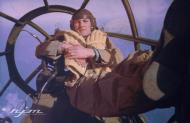

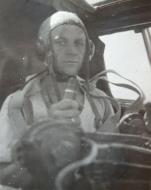

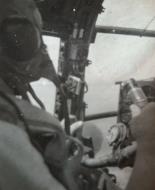
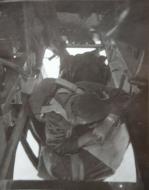


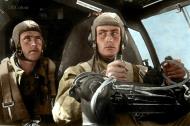


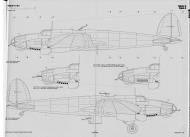



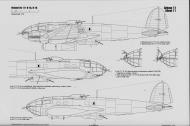

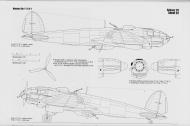
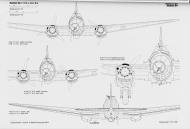


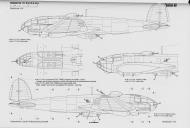


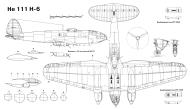


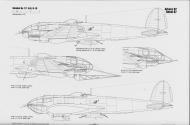
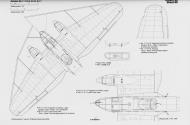

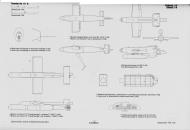
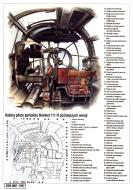






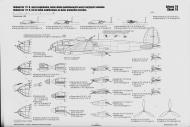
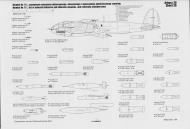









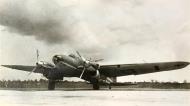
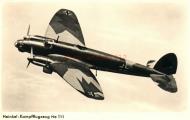

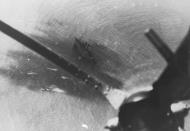
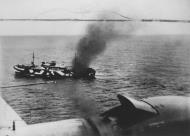

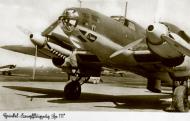



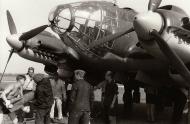



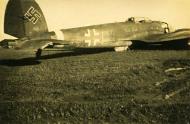
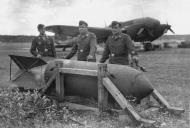



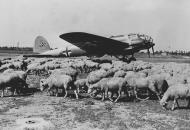

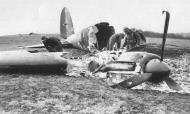

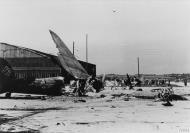


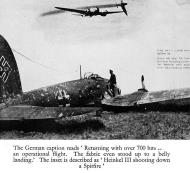


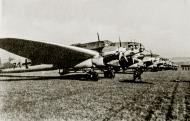




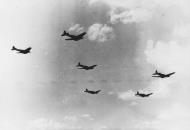

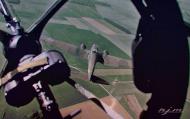
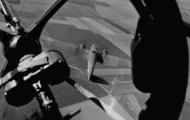
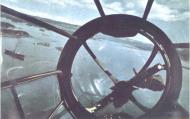

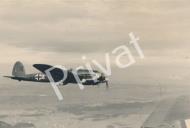




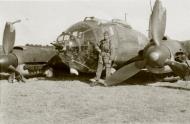
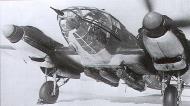
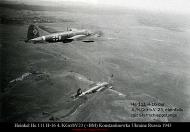

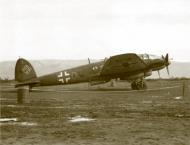


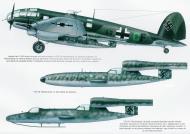

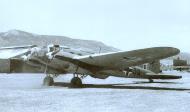
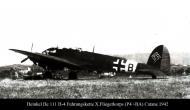




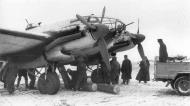
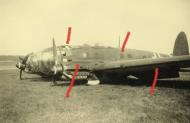






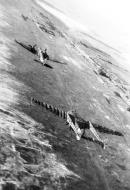
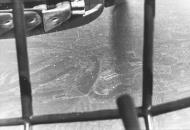


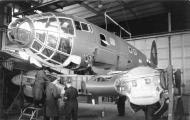





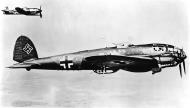
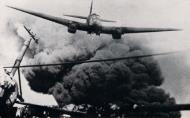


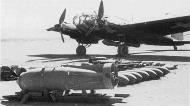



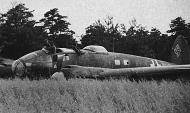






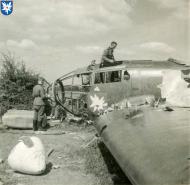
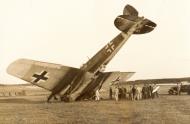

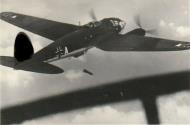

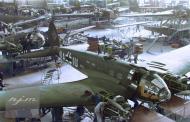






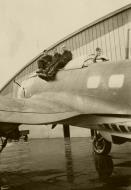
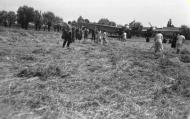


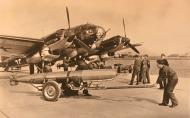

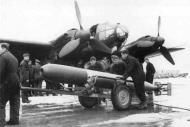
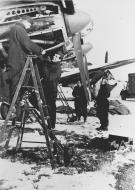
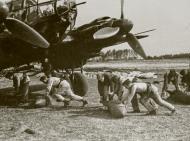
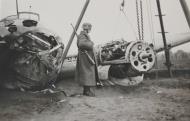


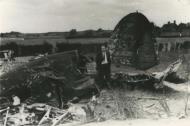






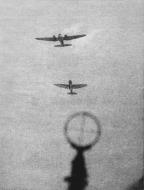
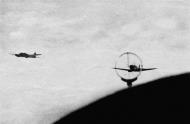

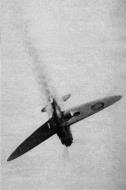




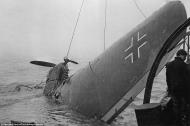

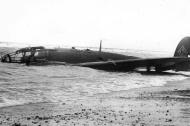


122-France-Oct-19-1940-01.jpg)


